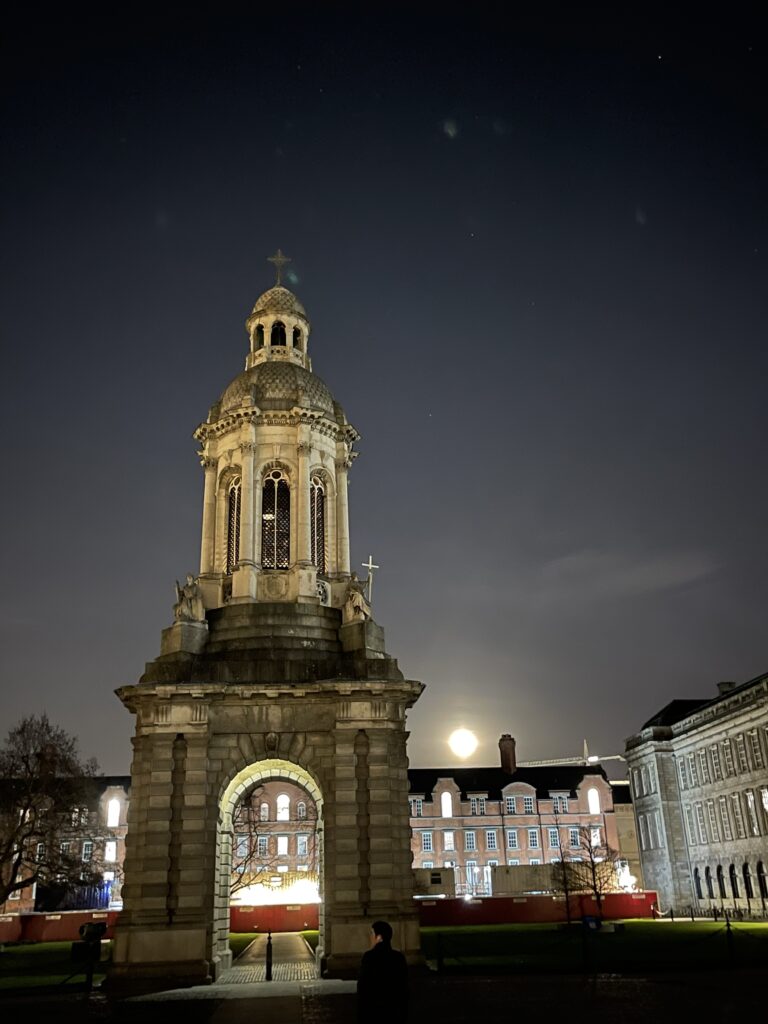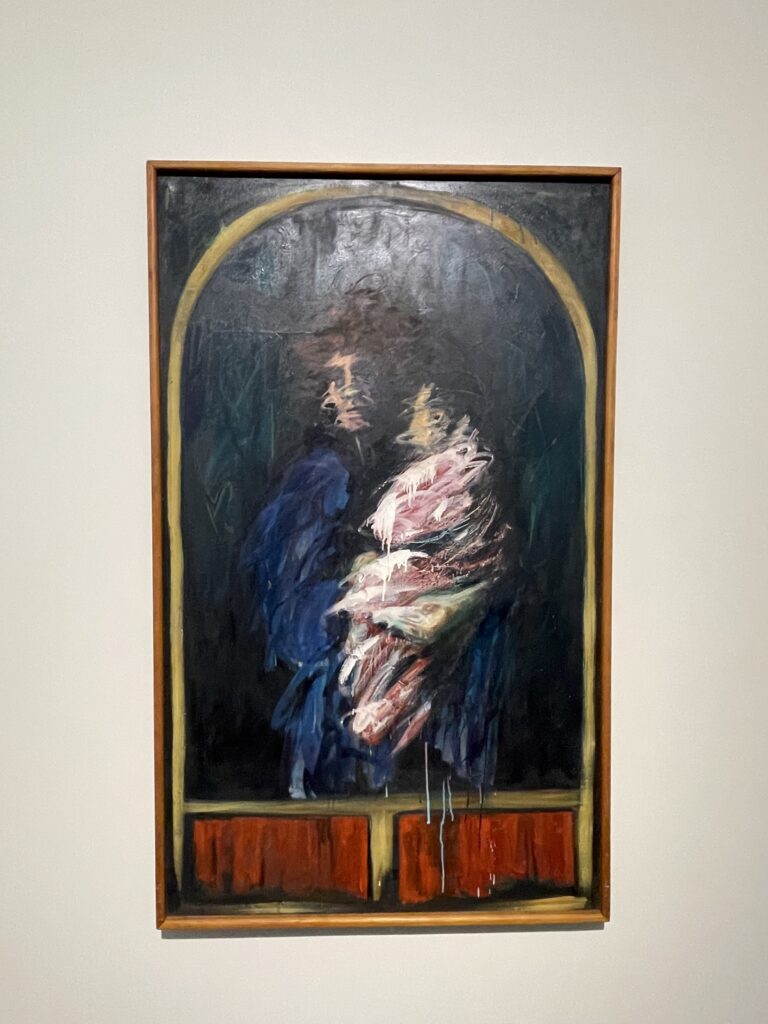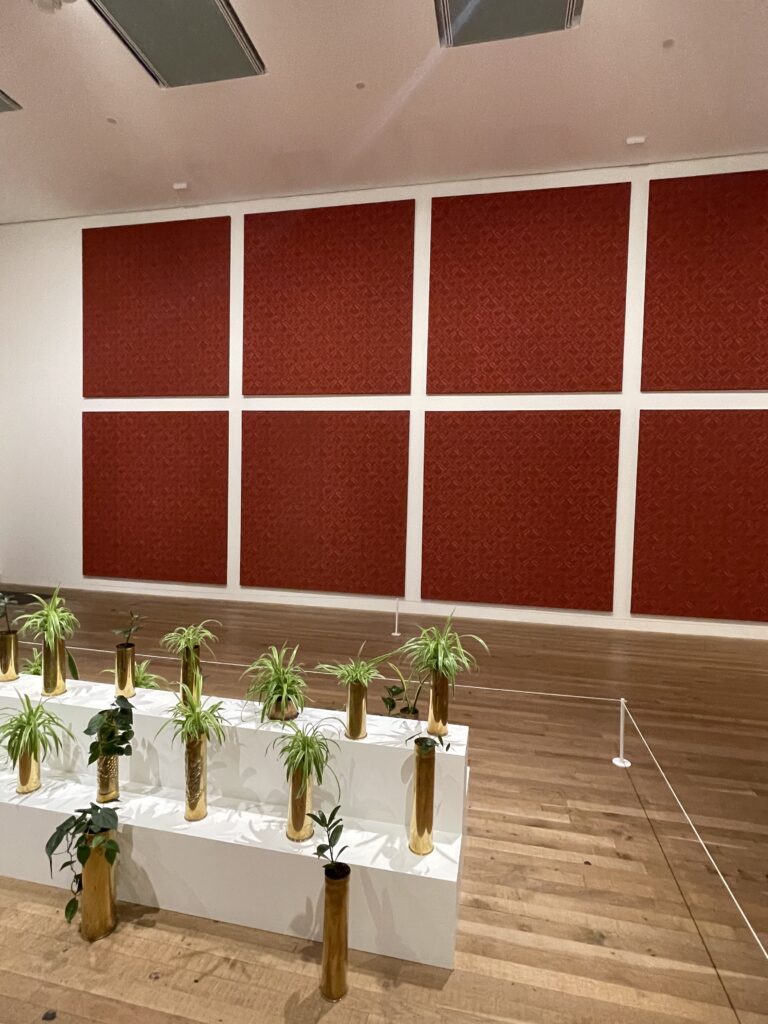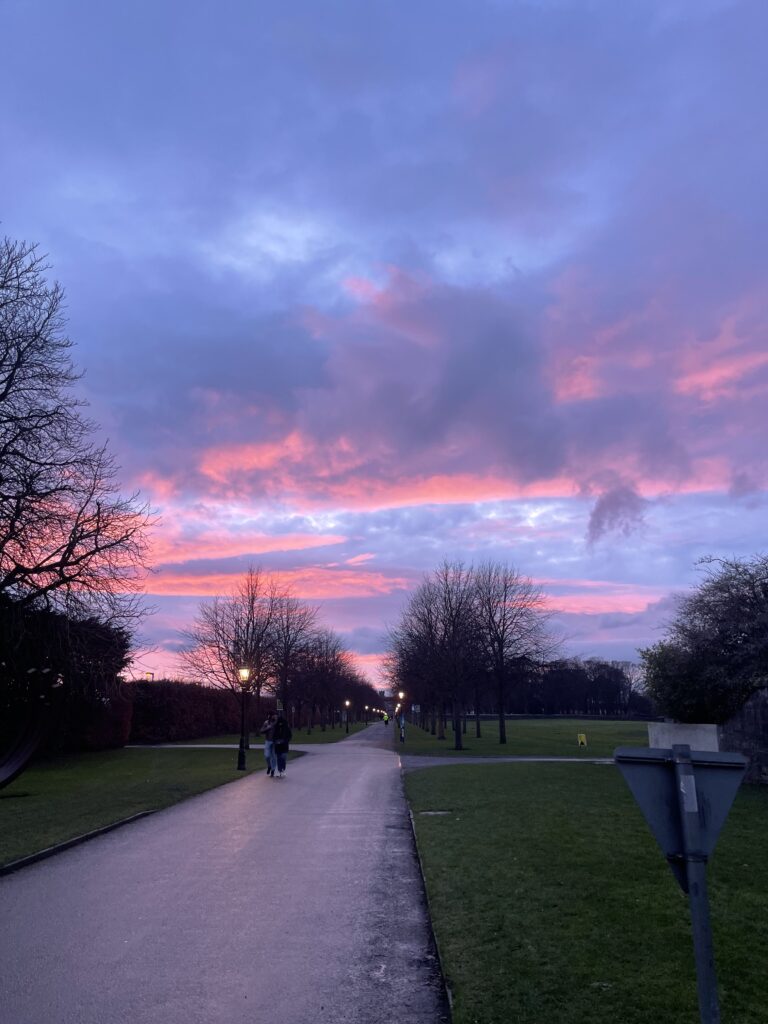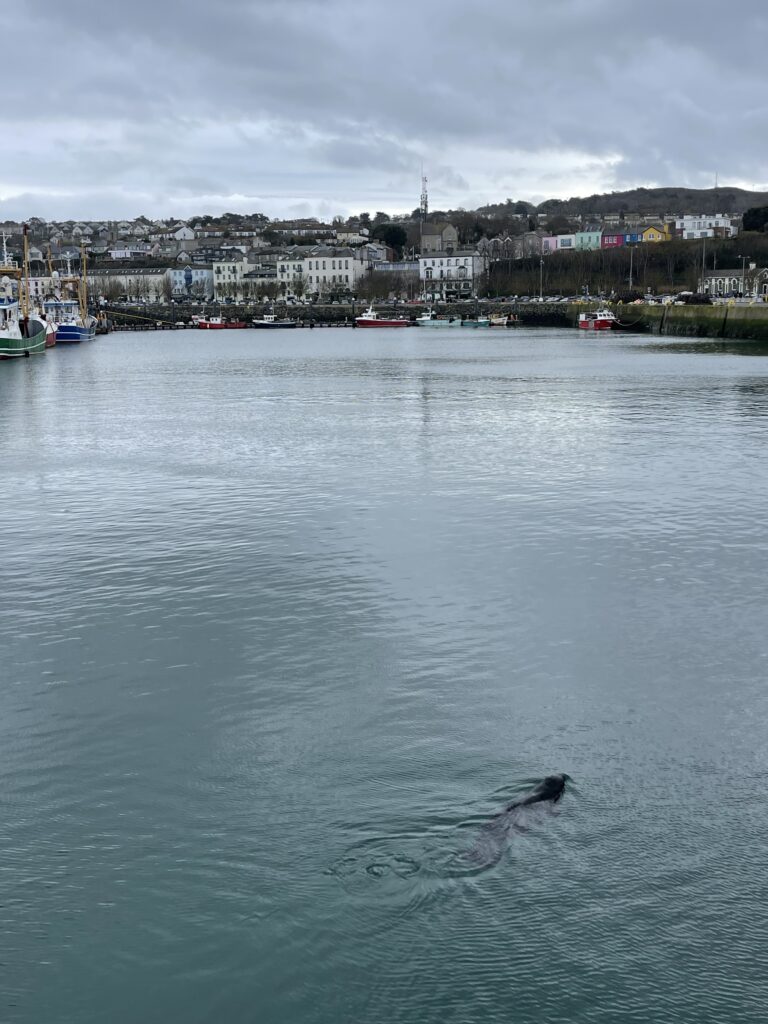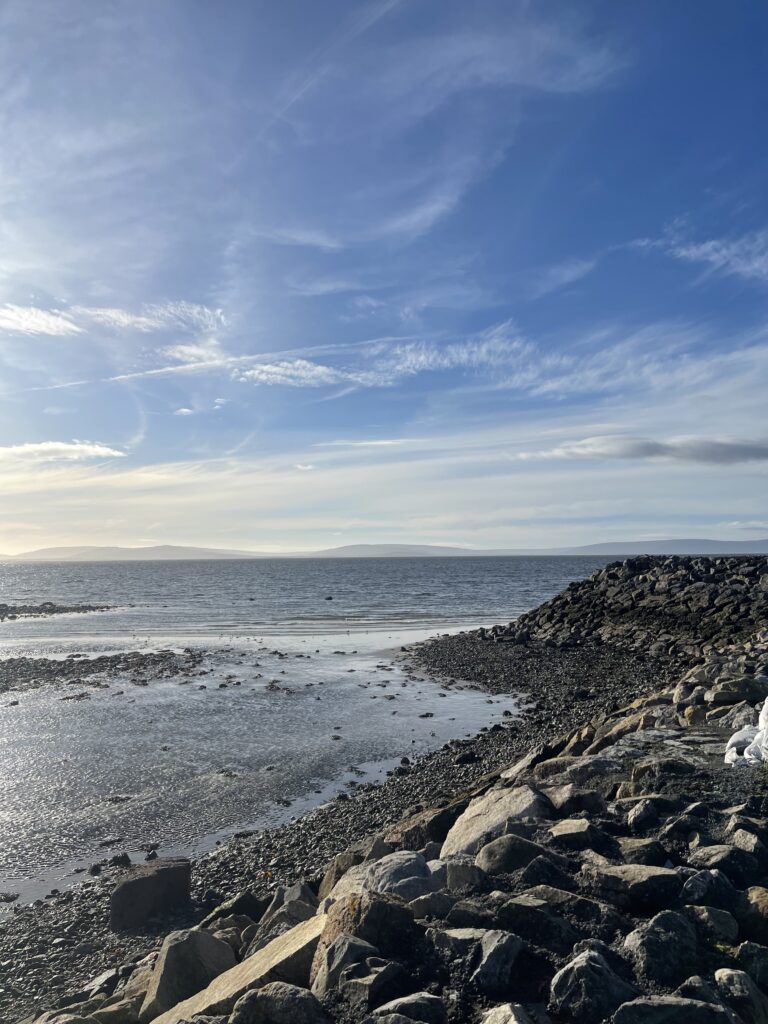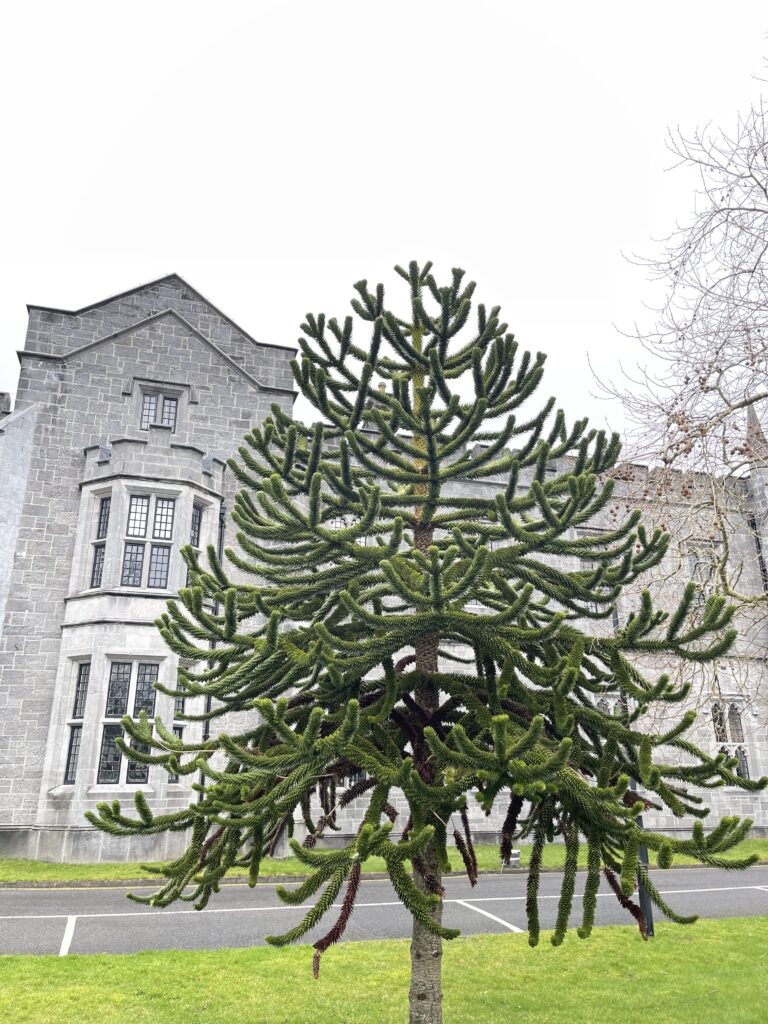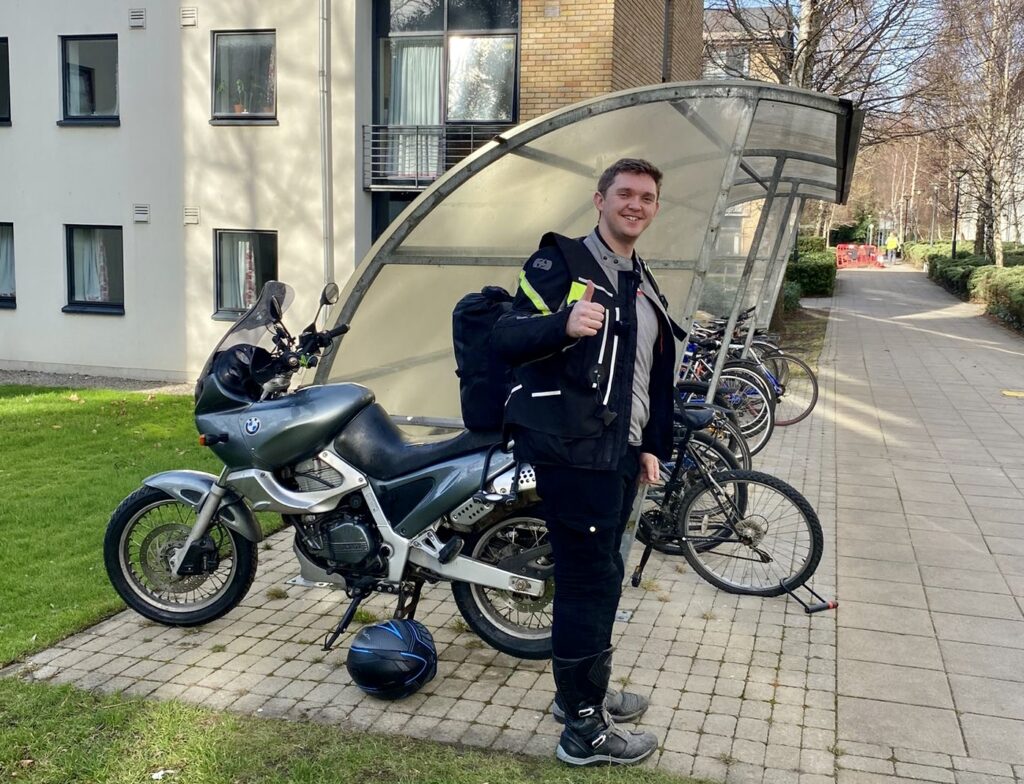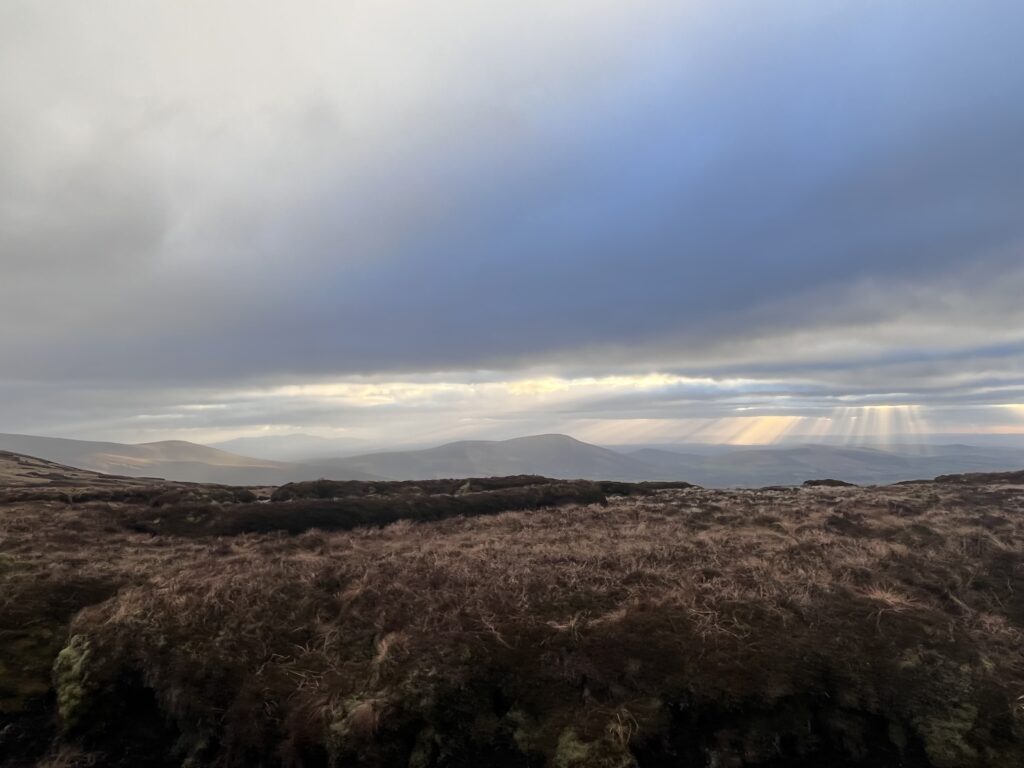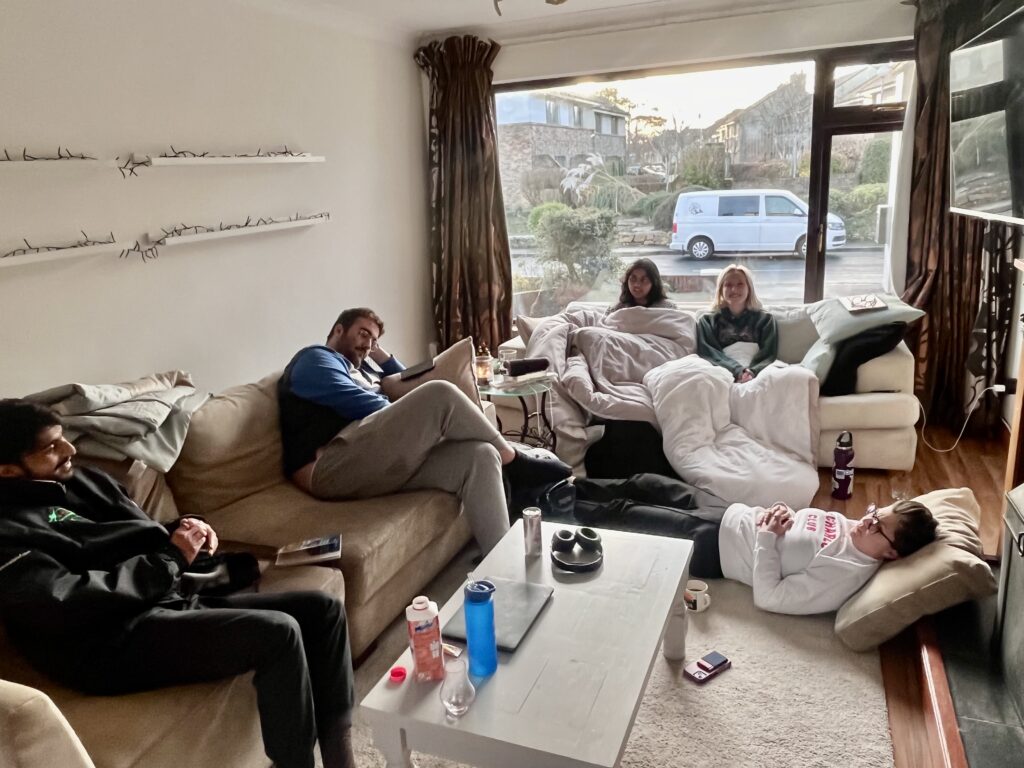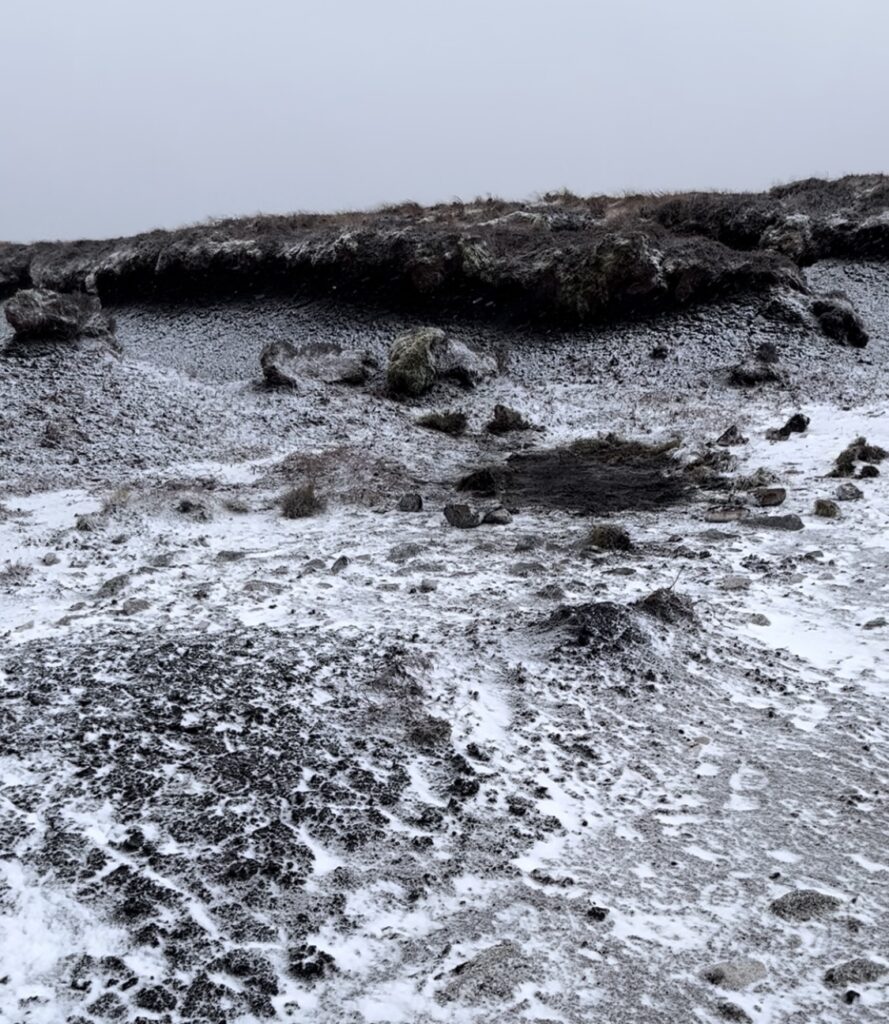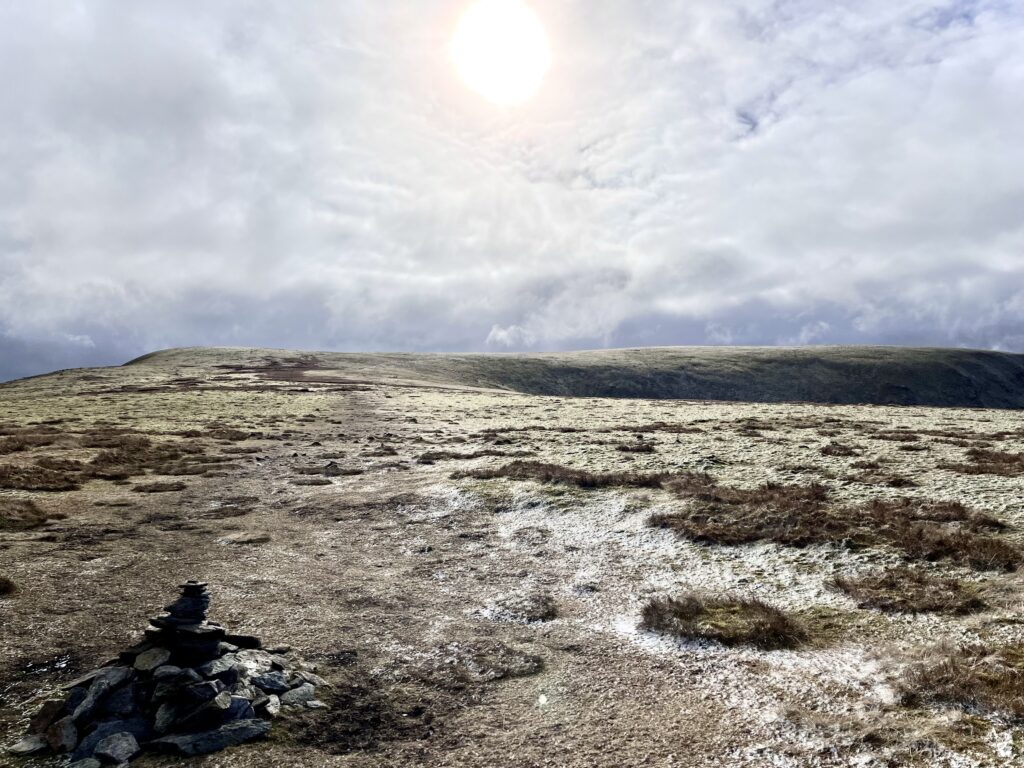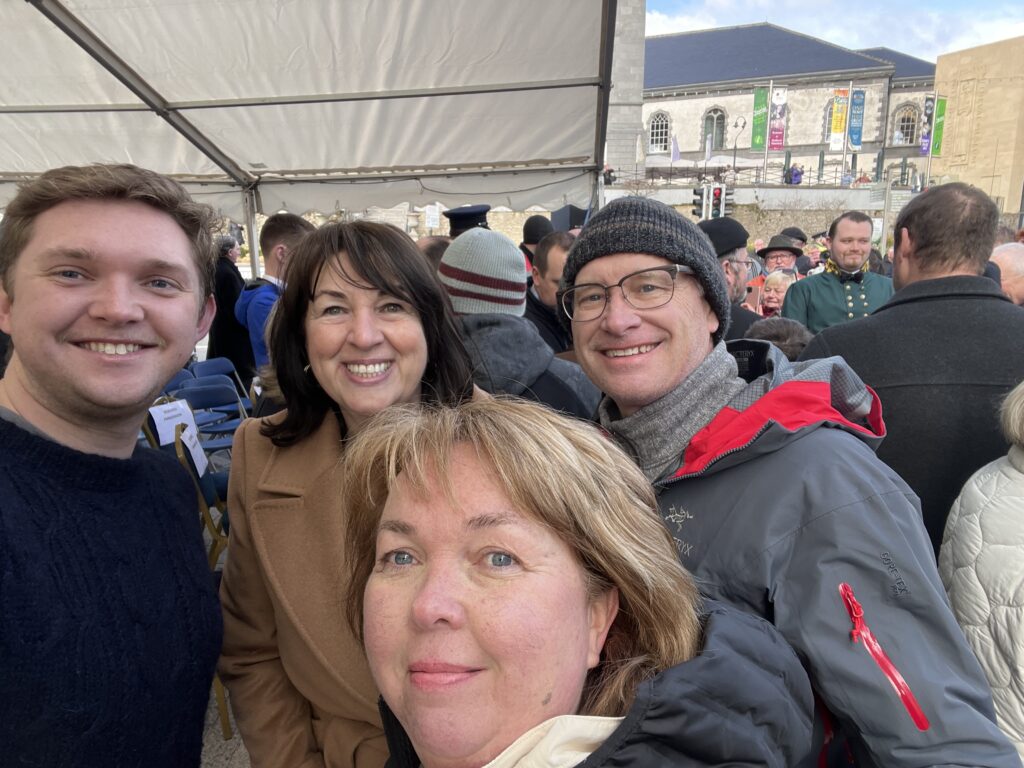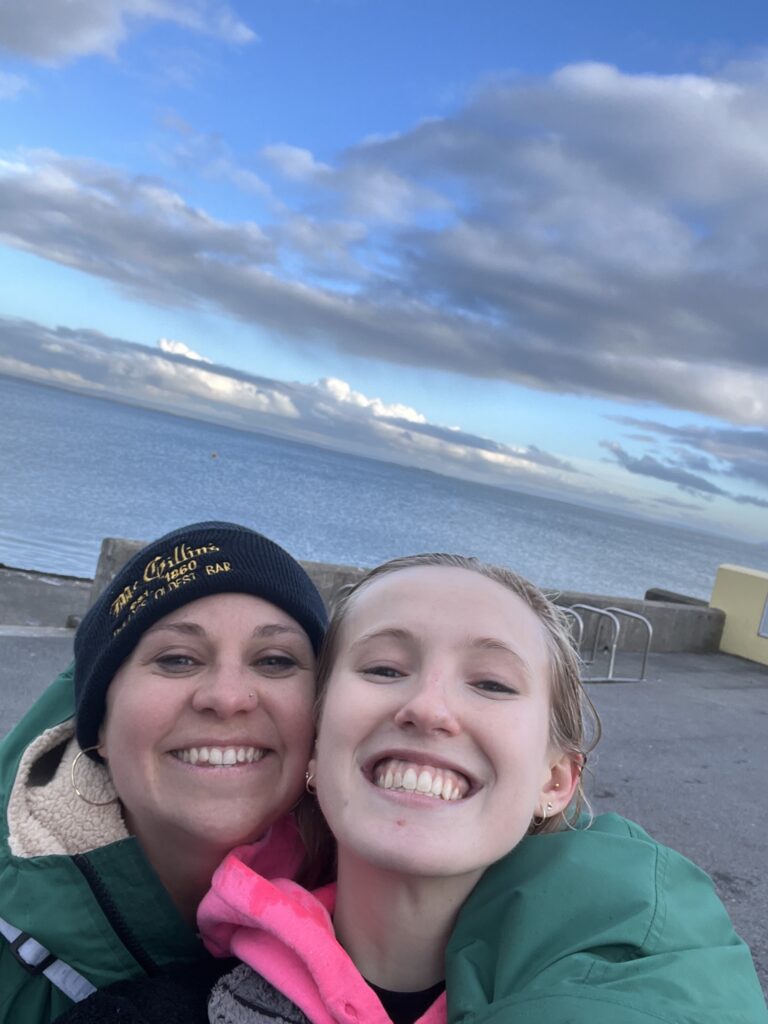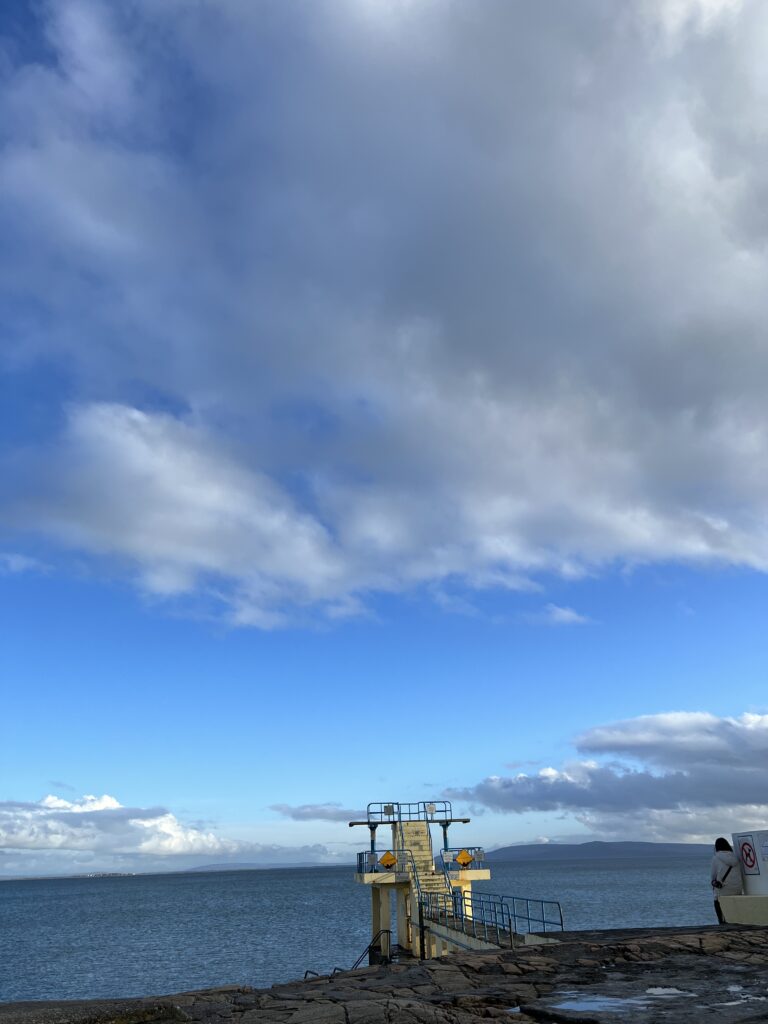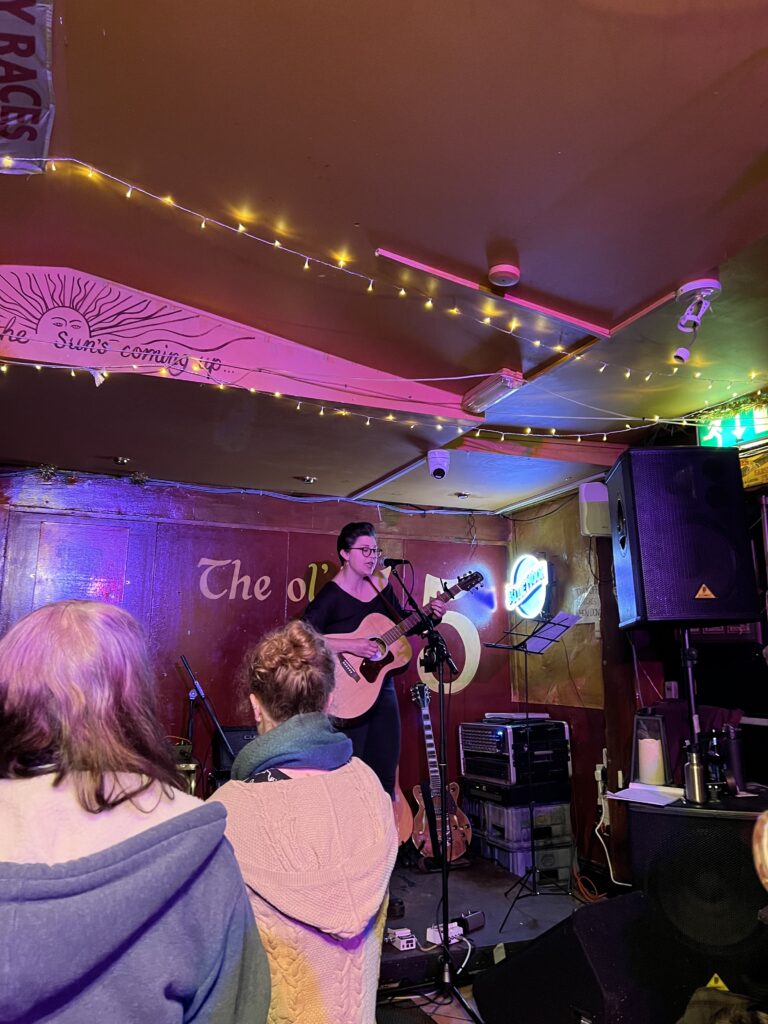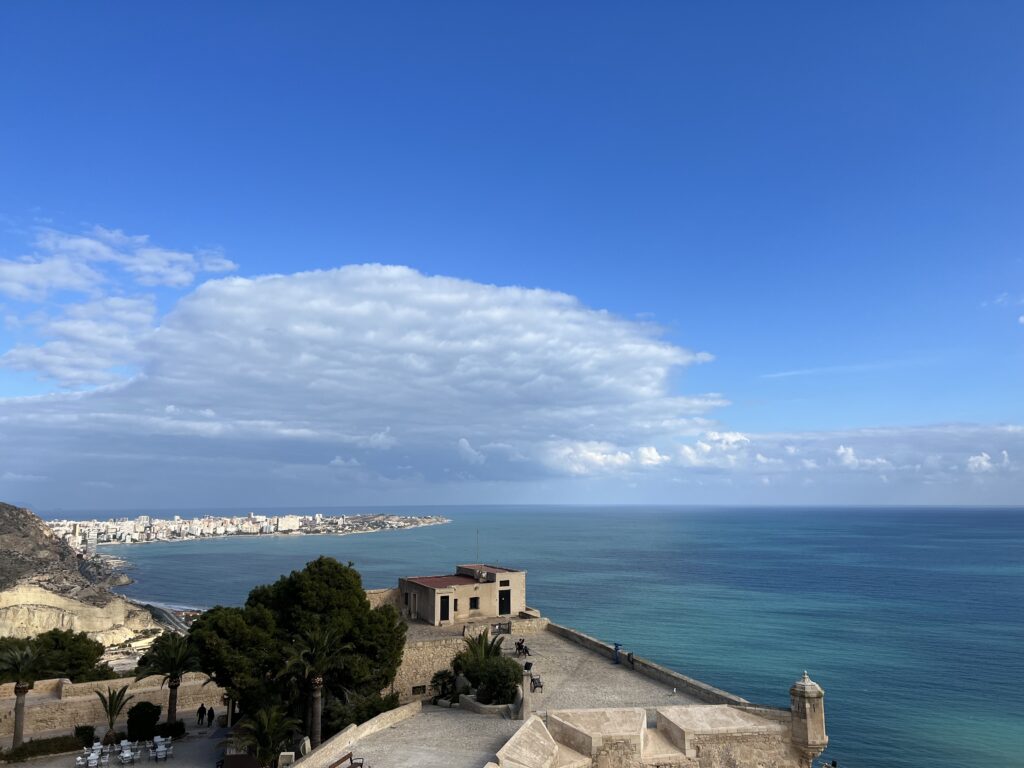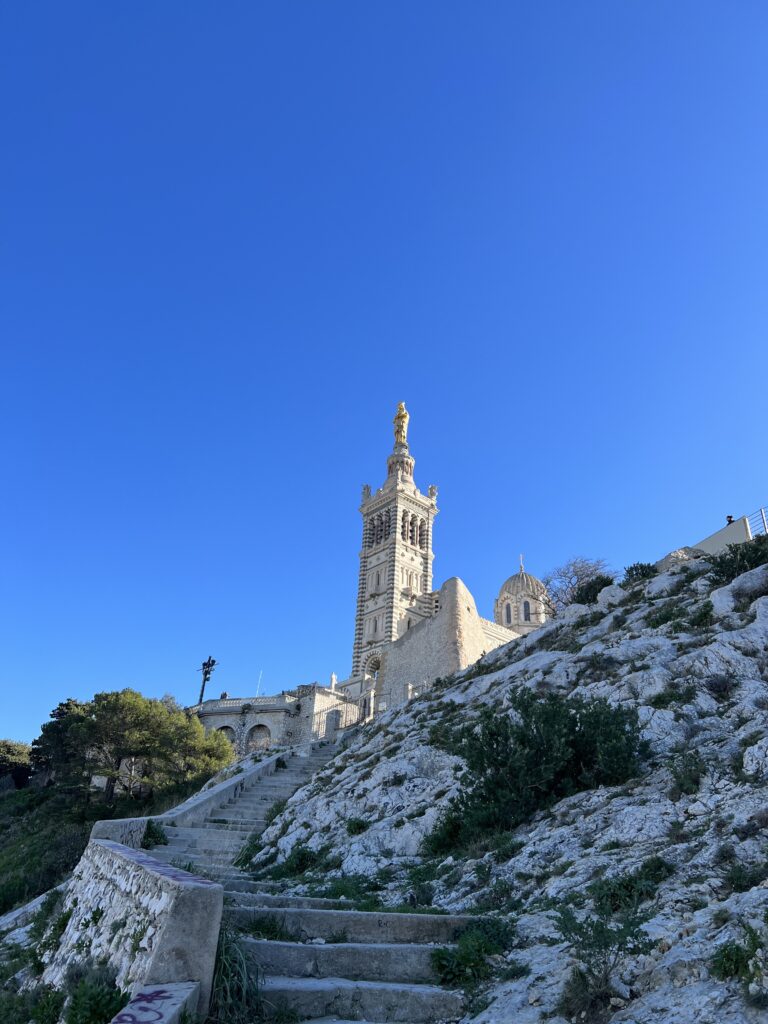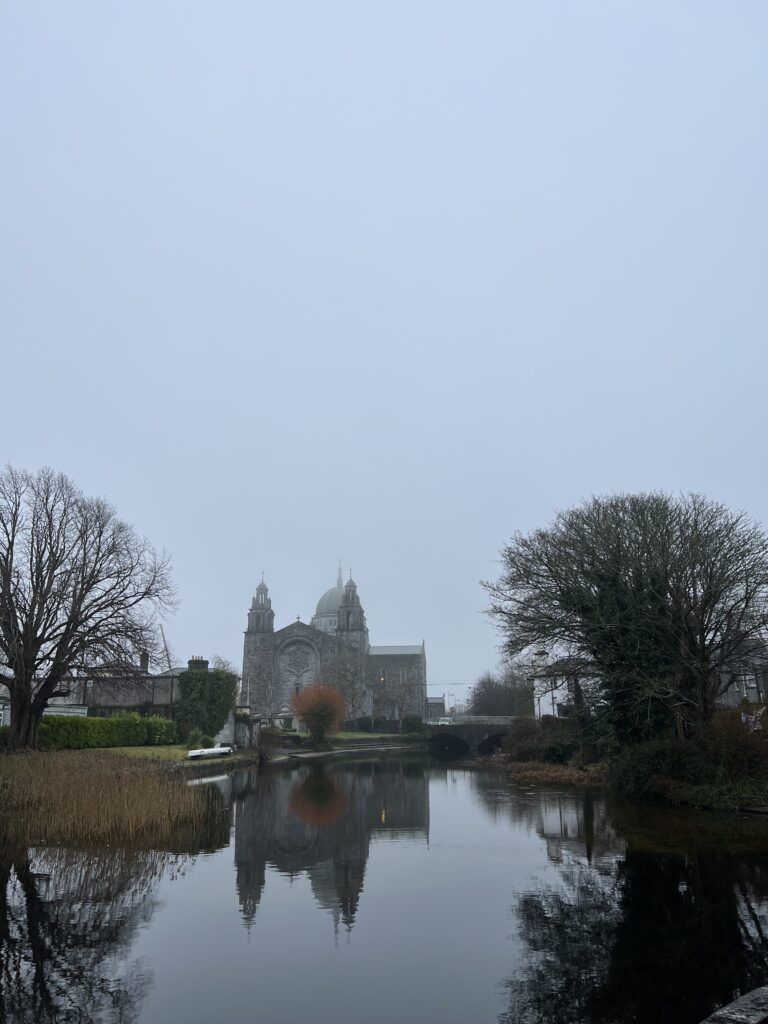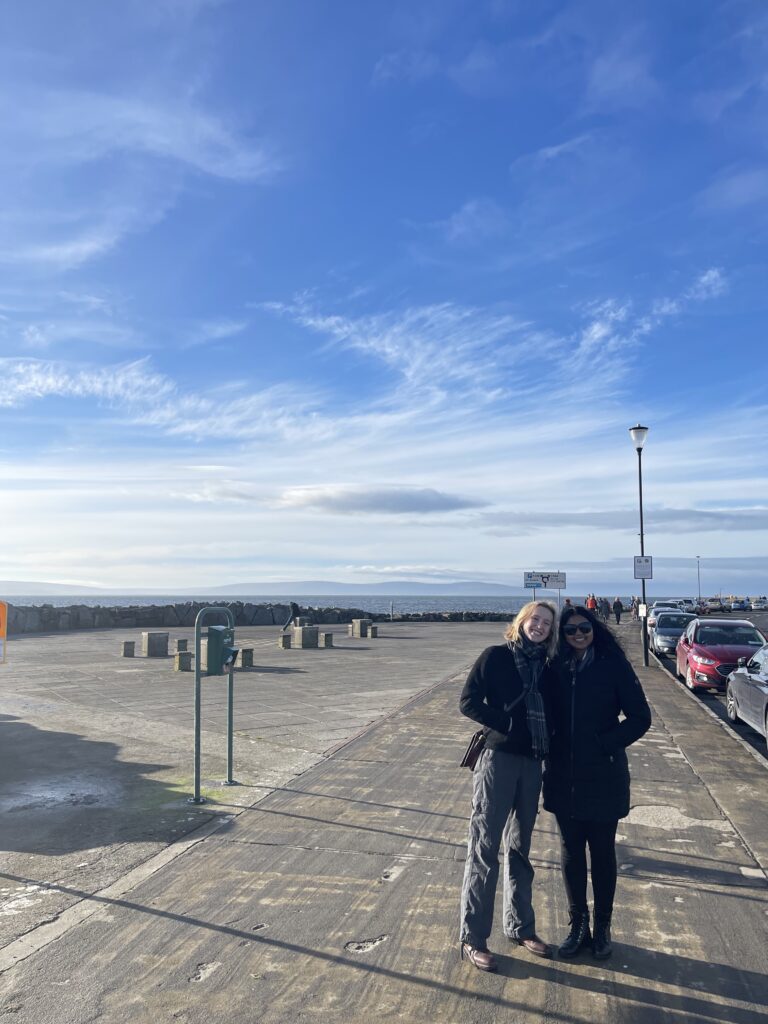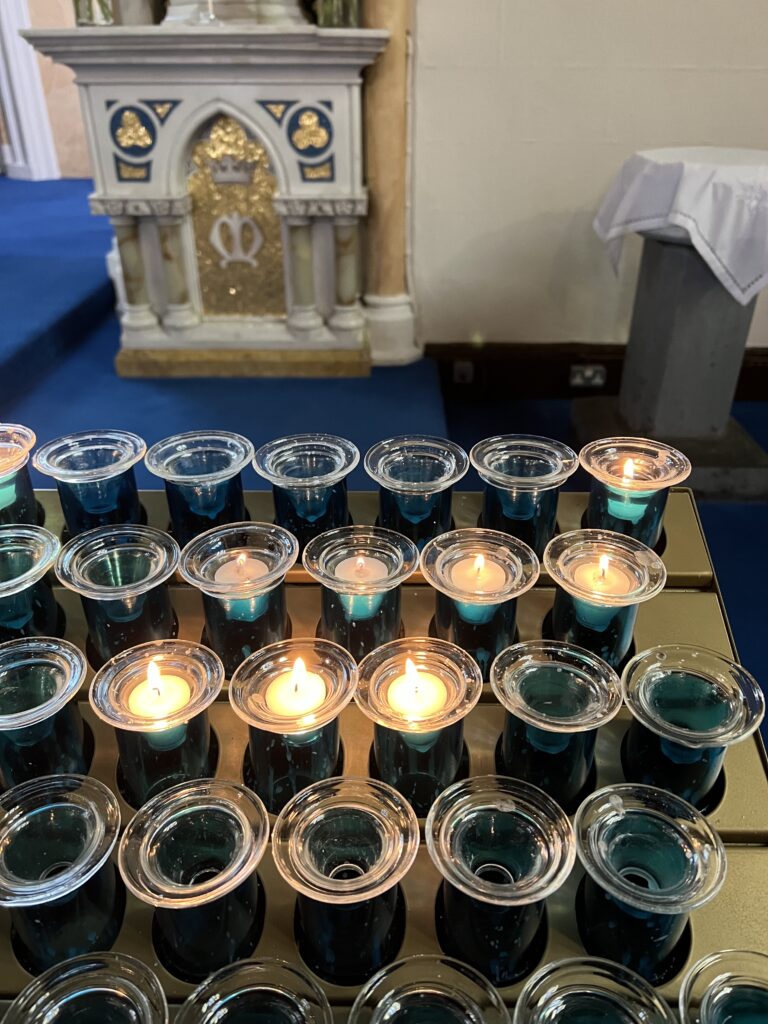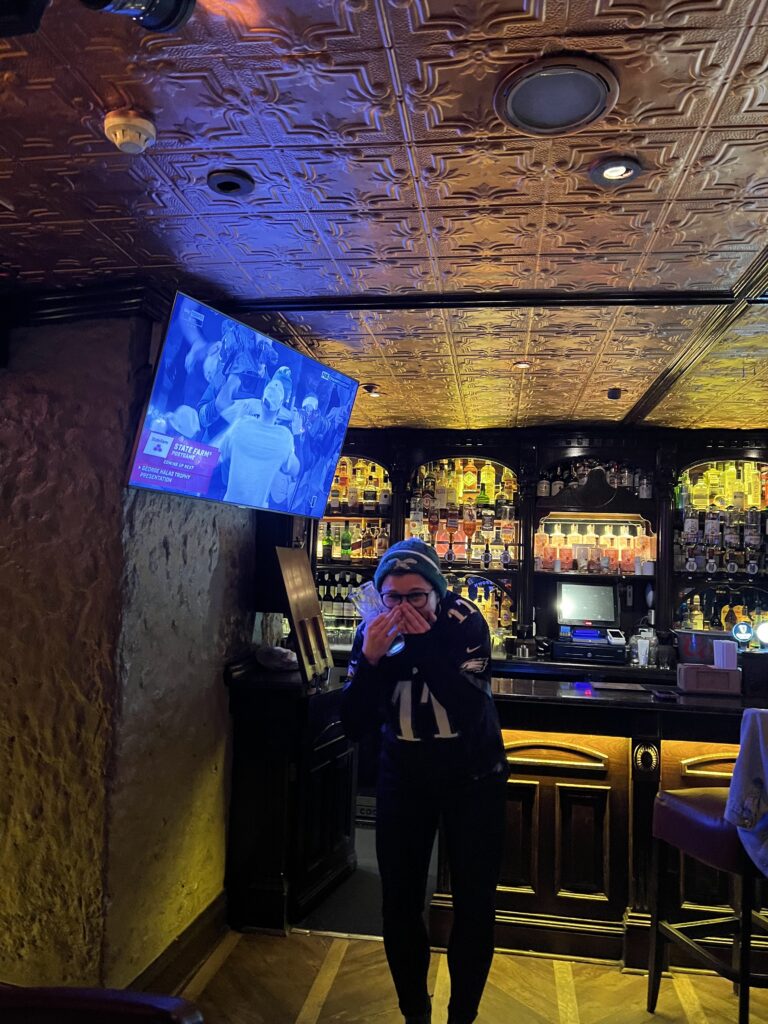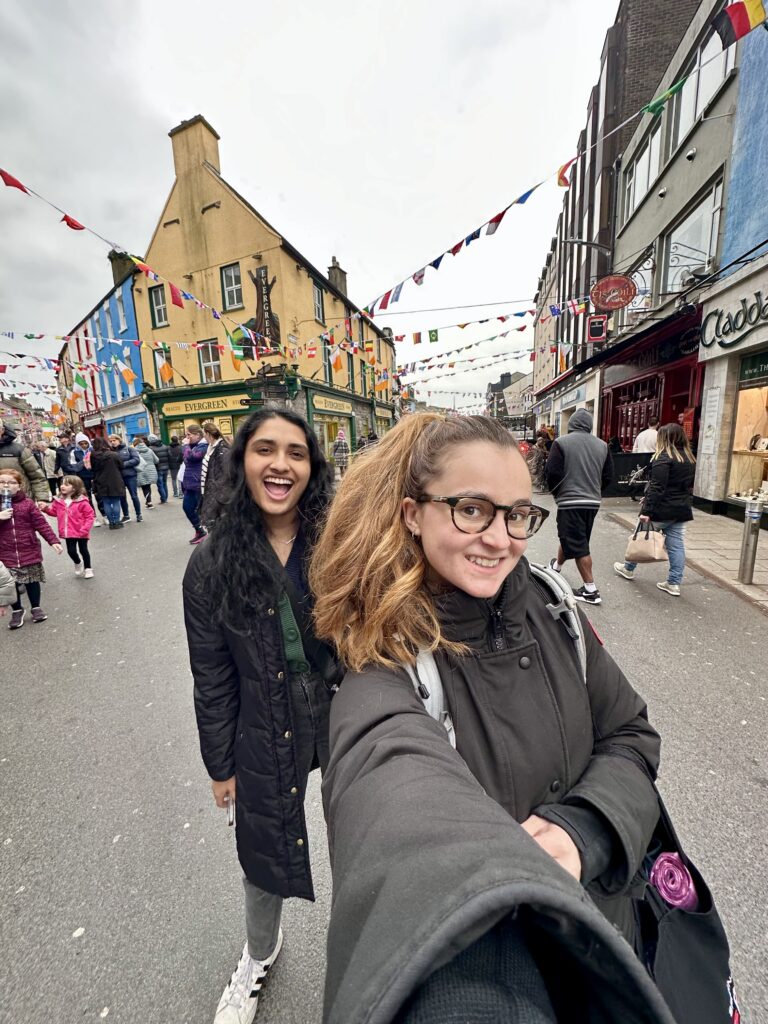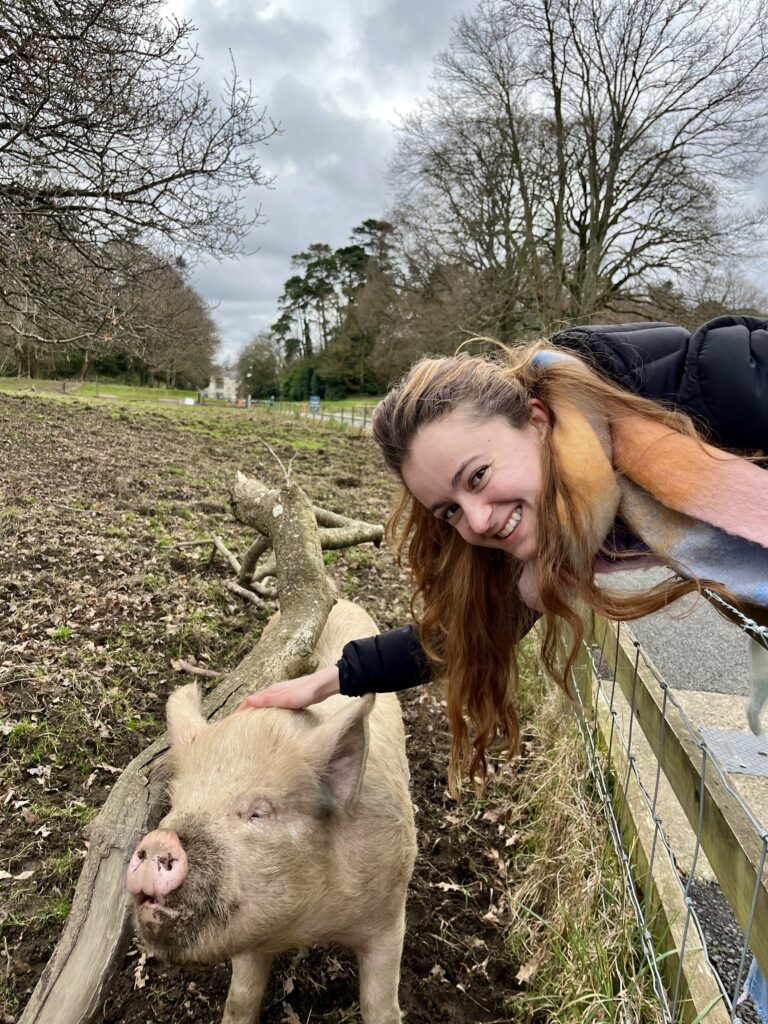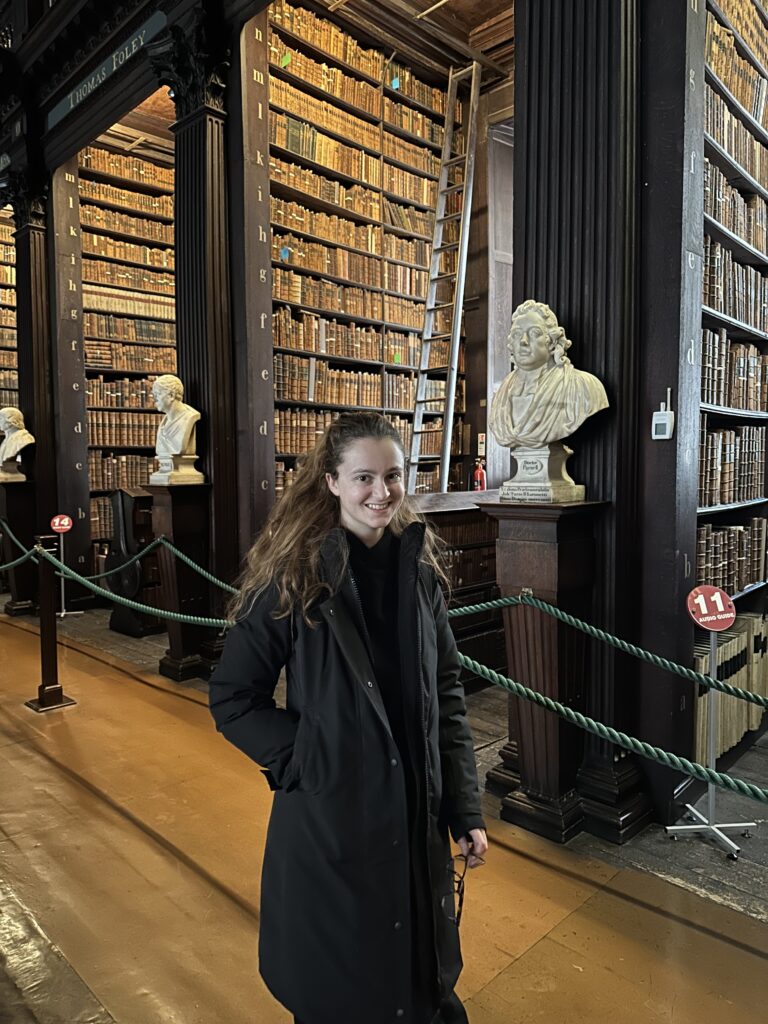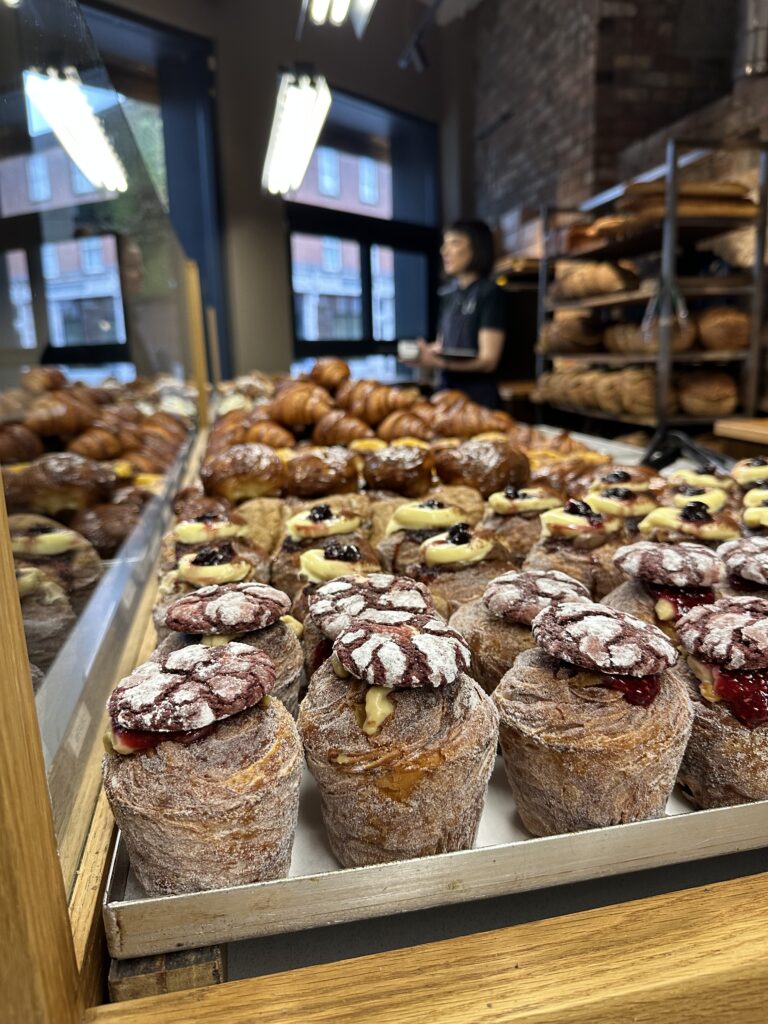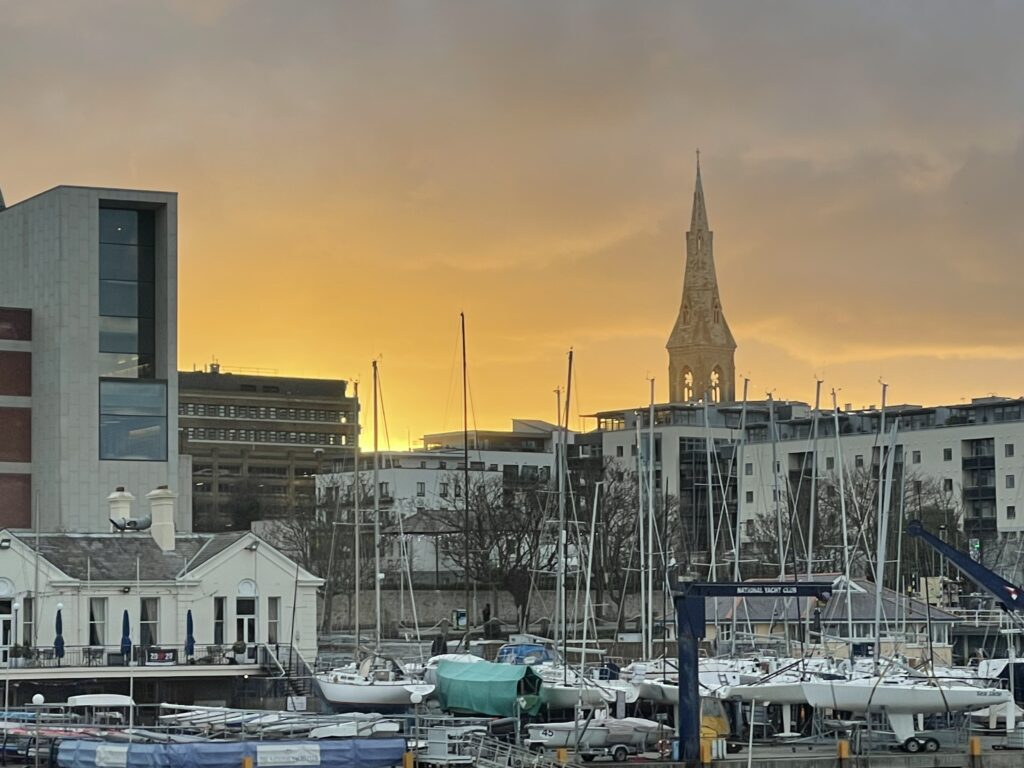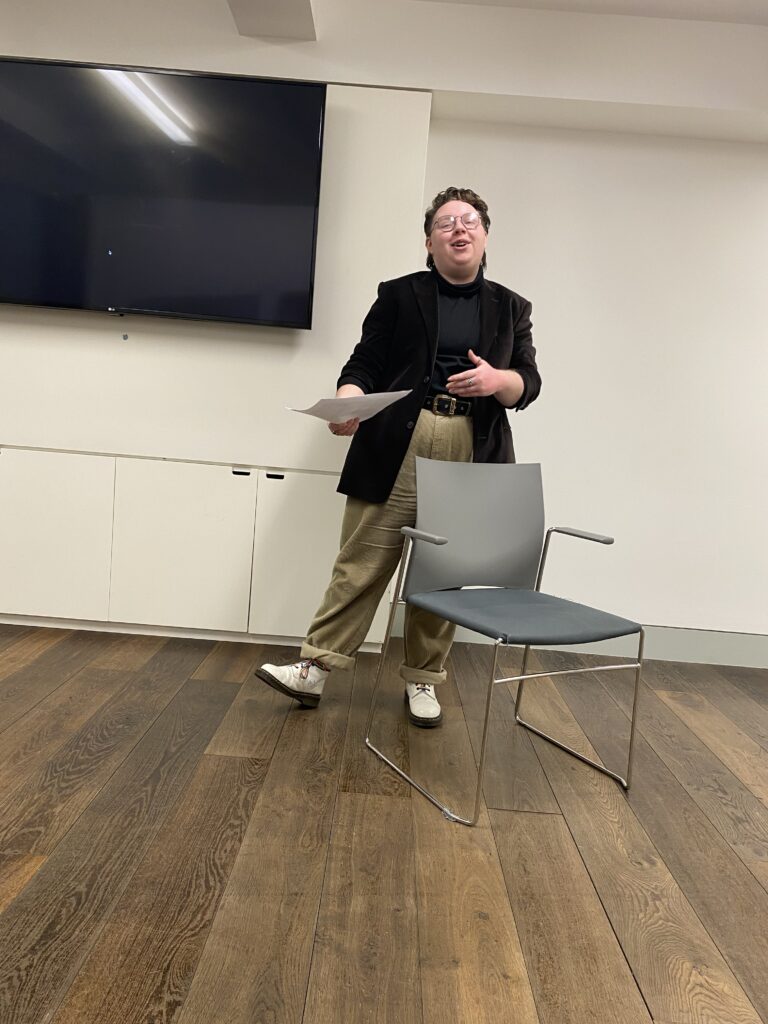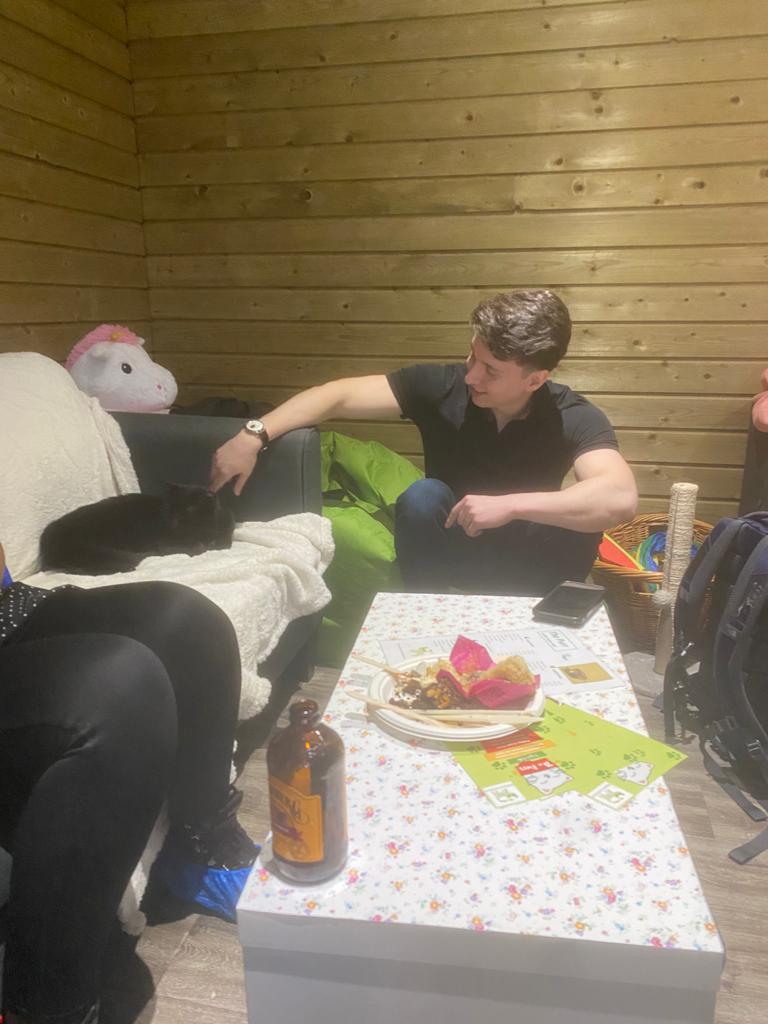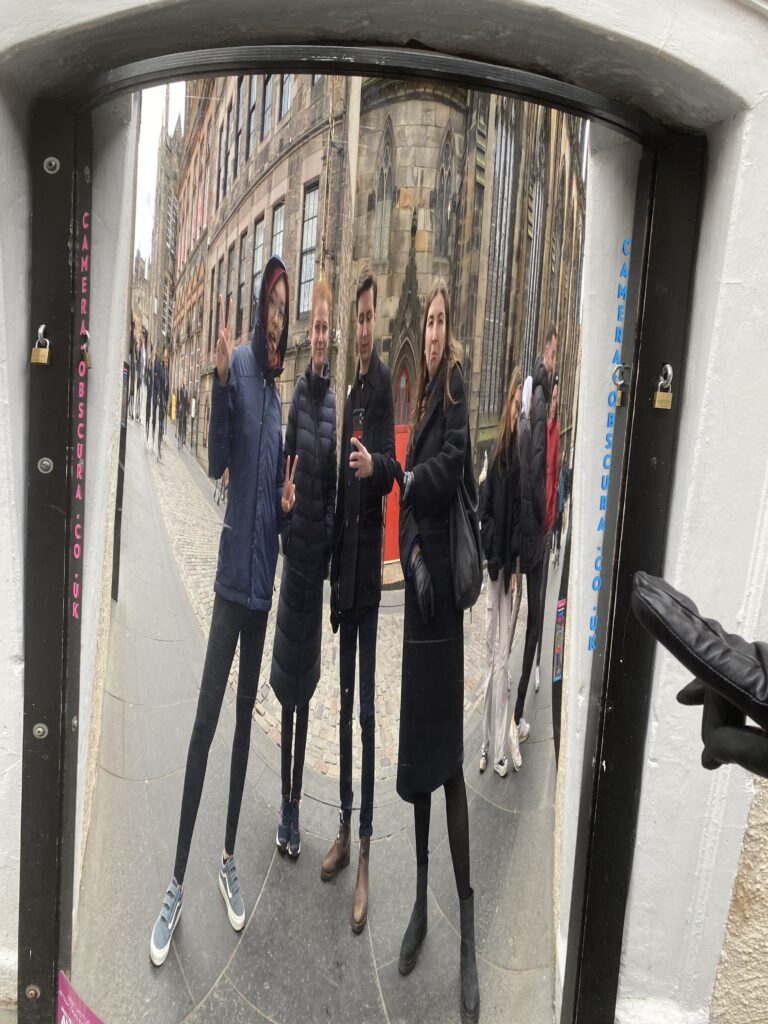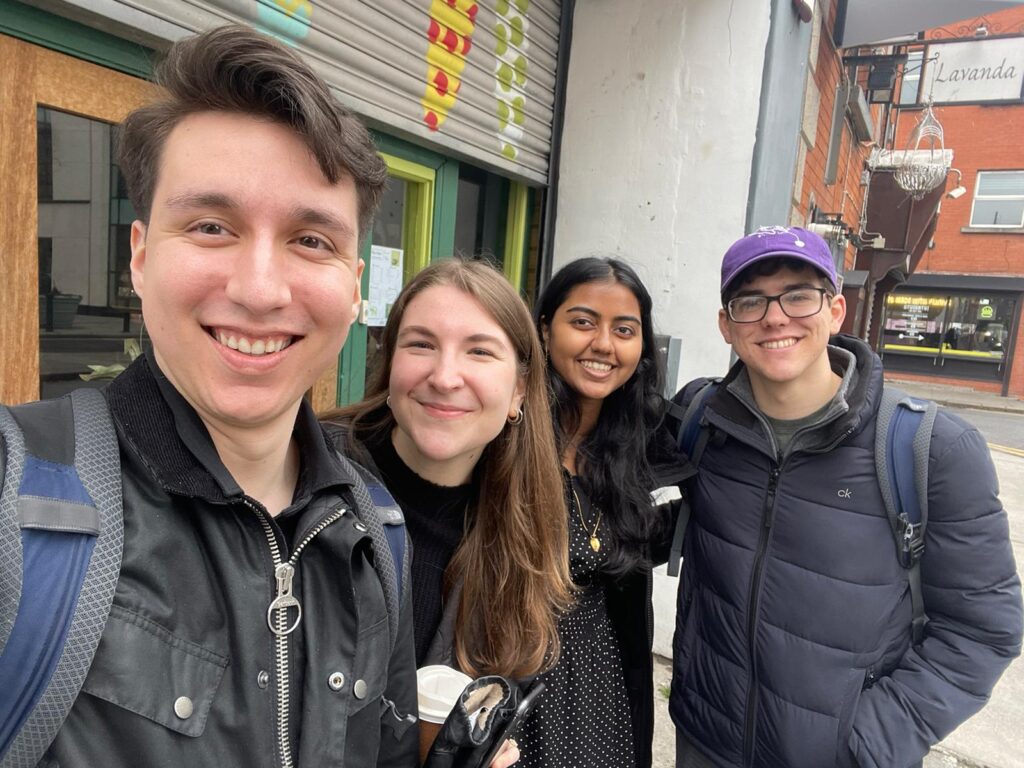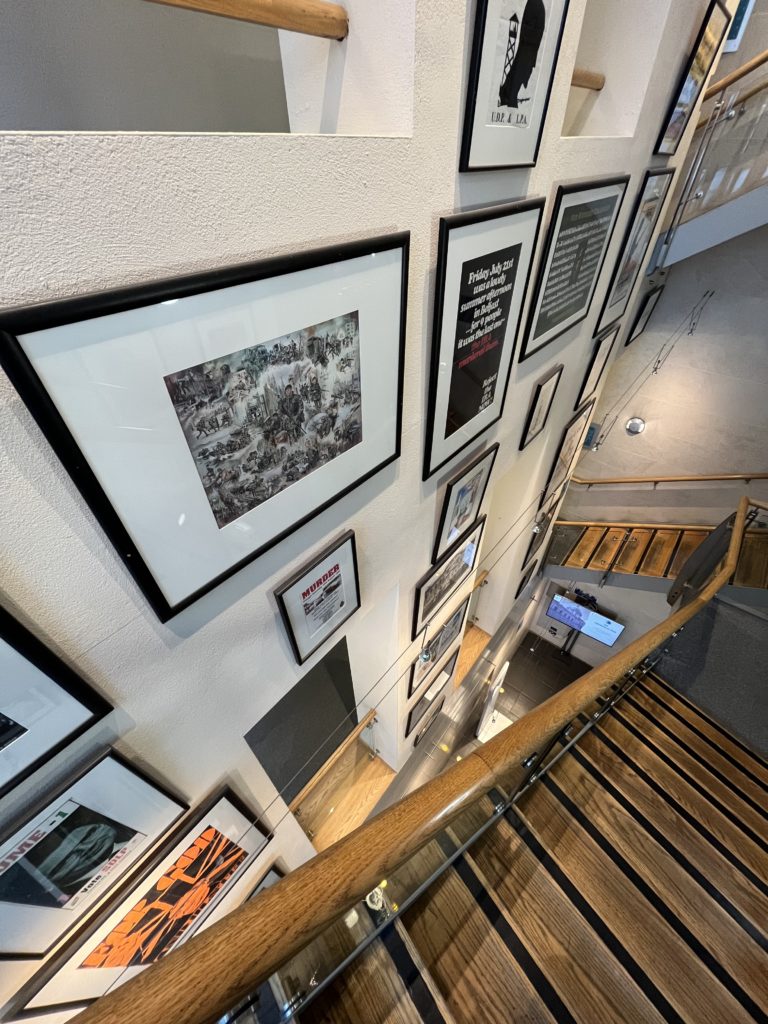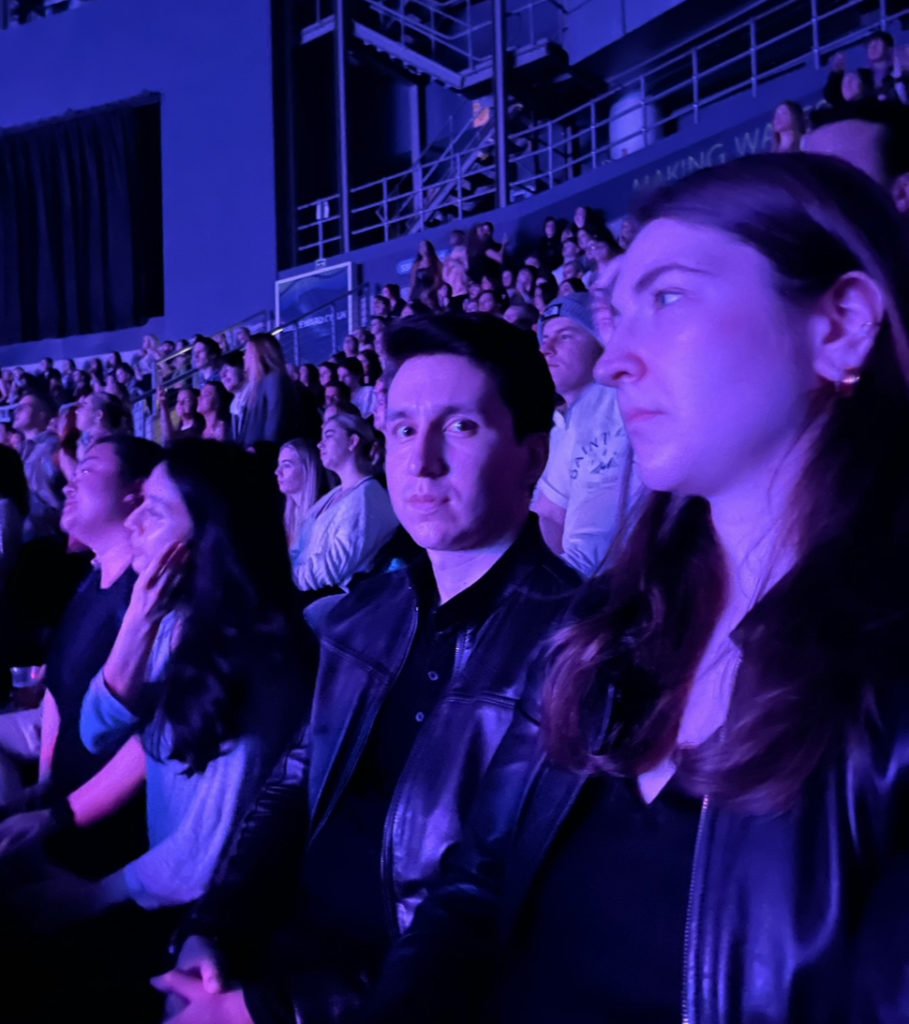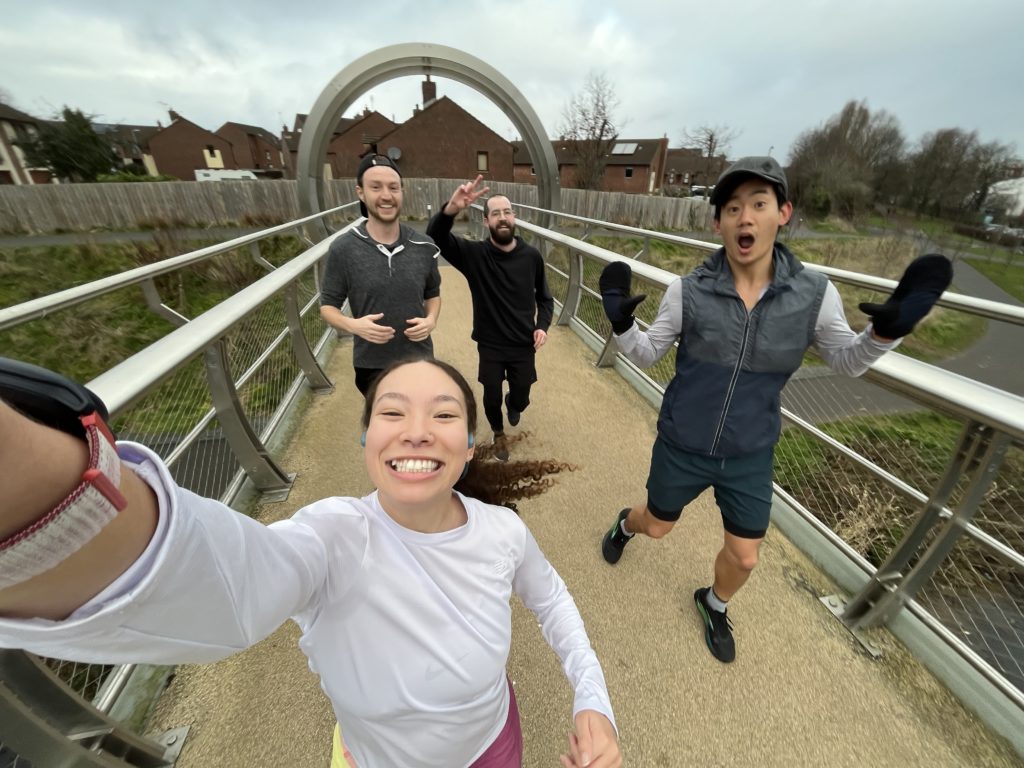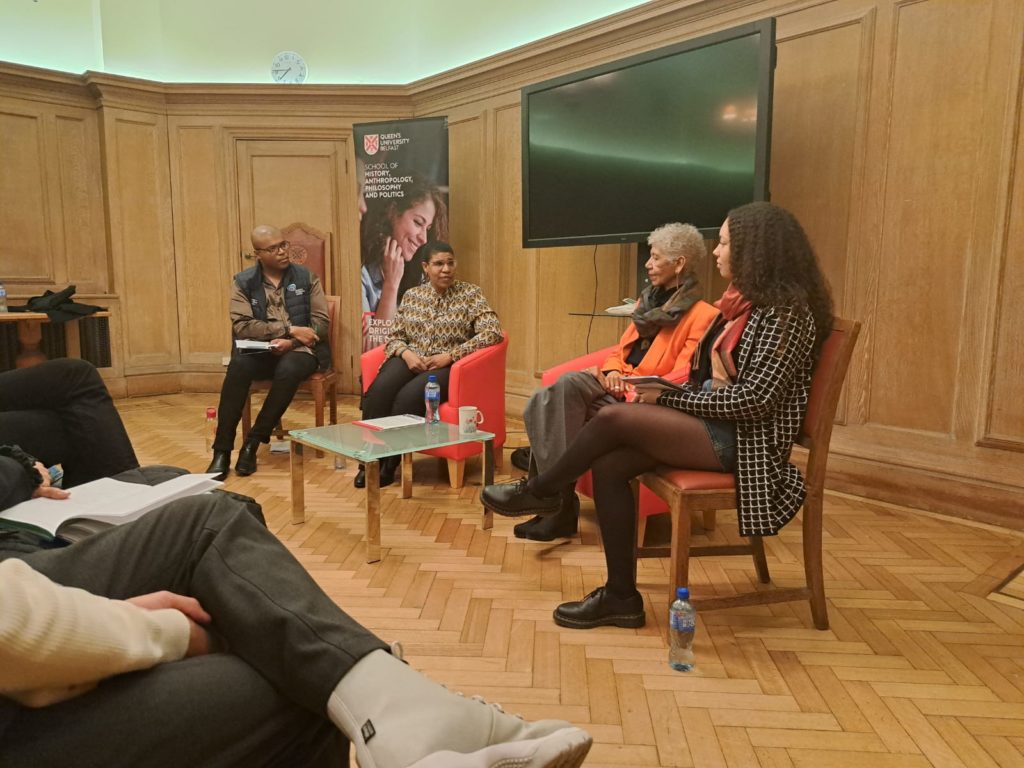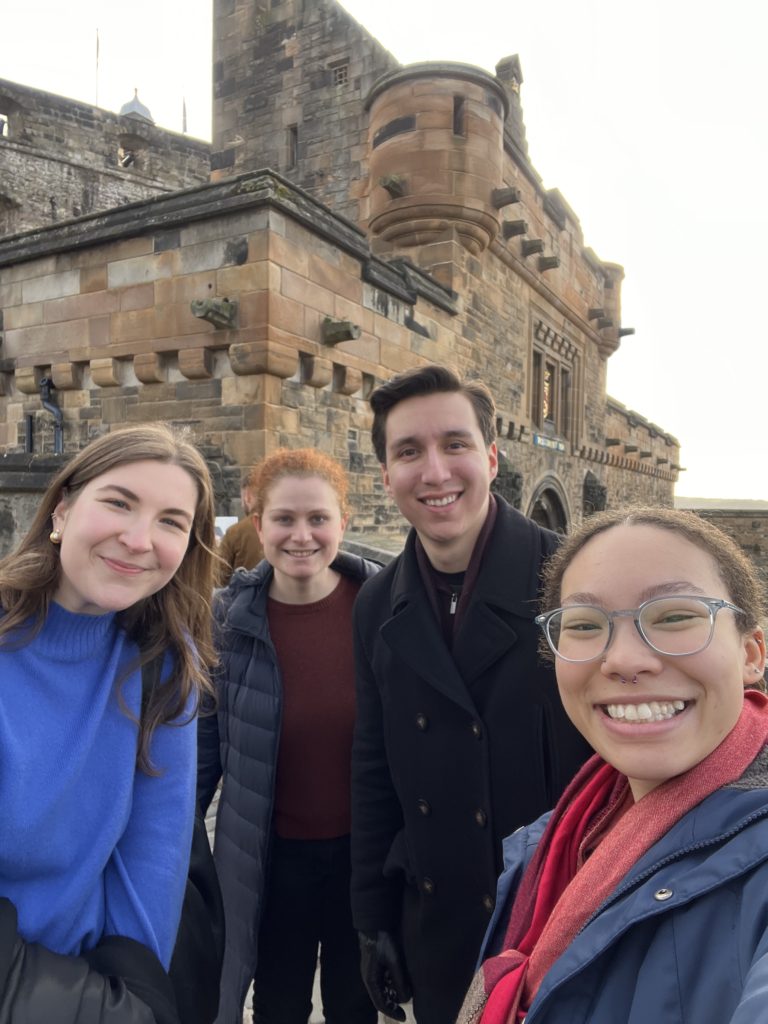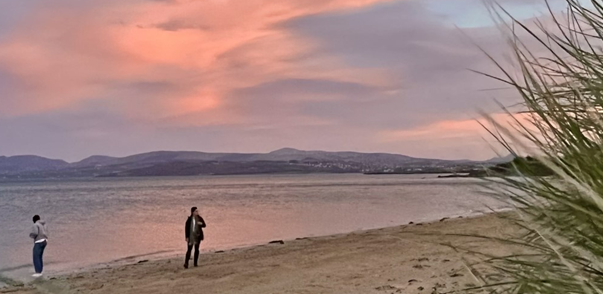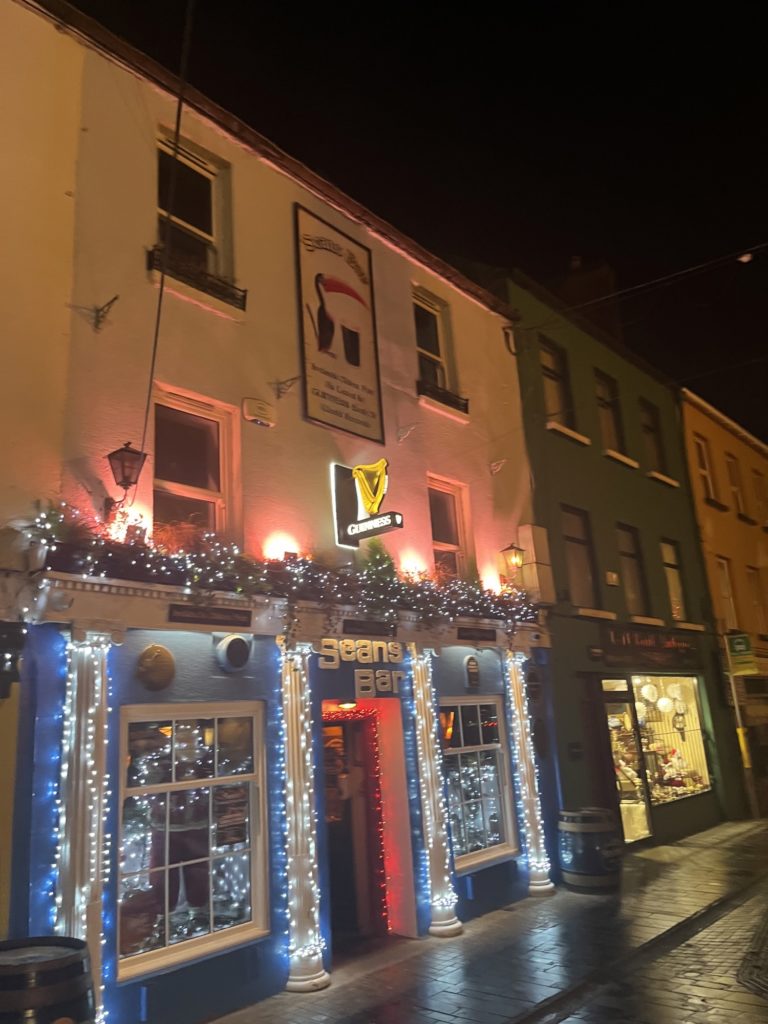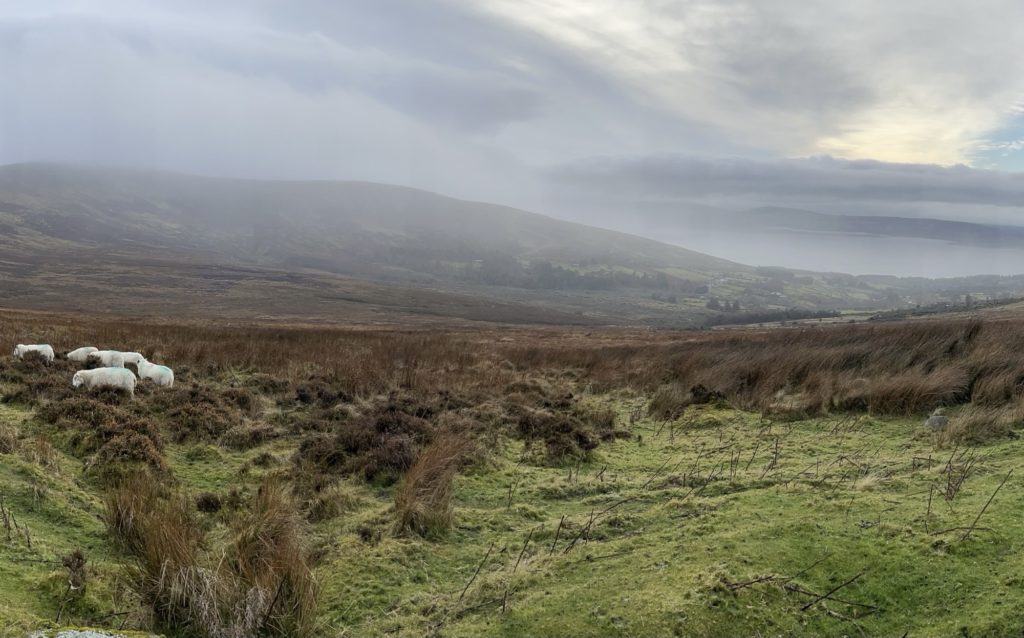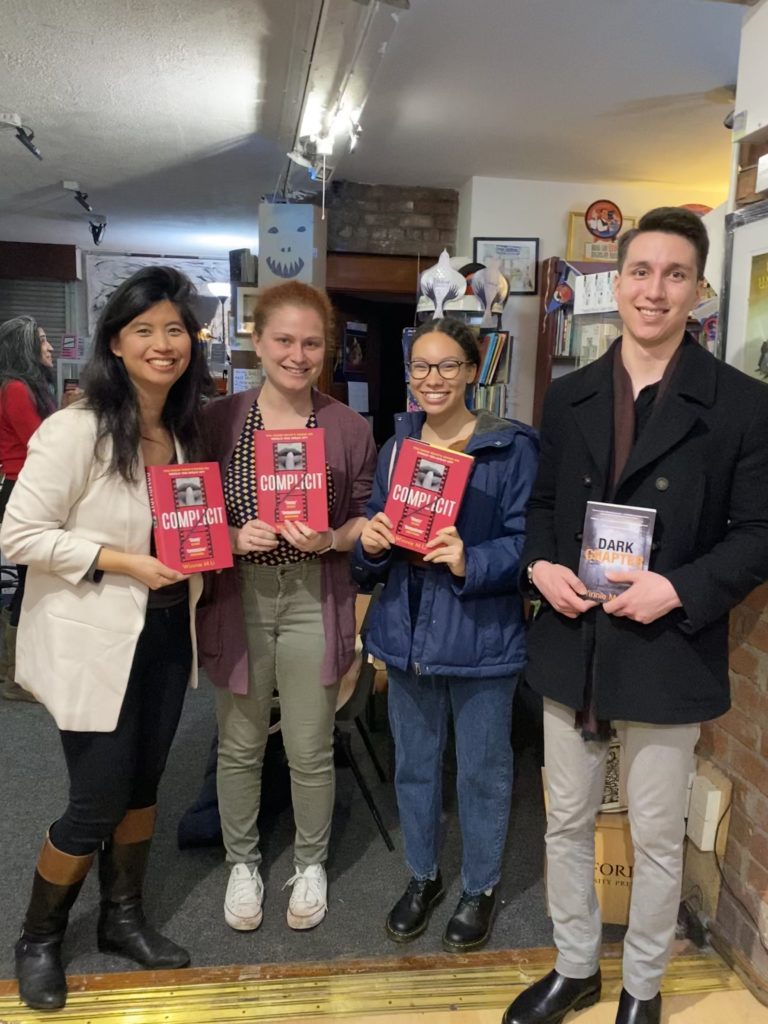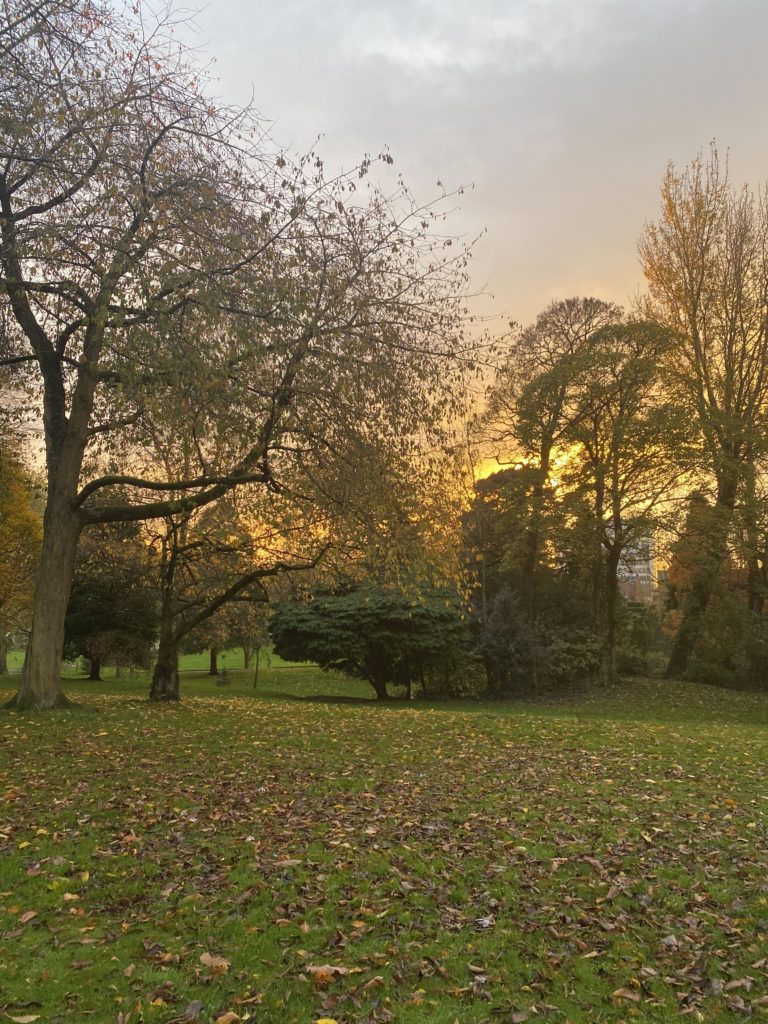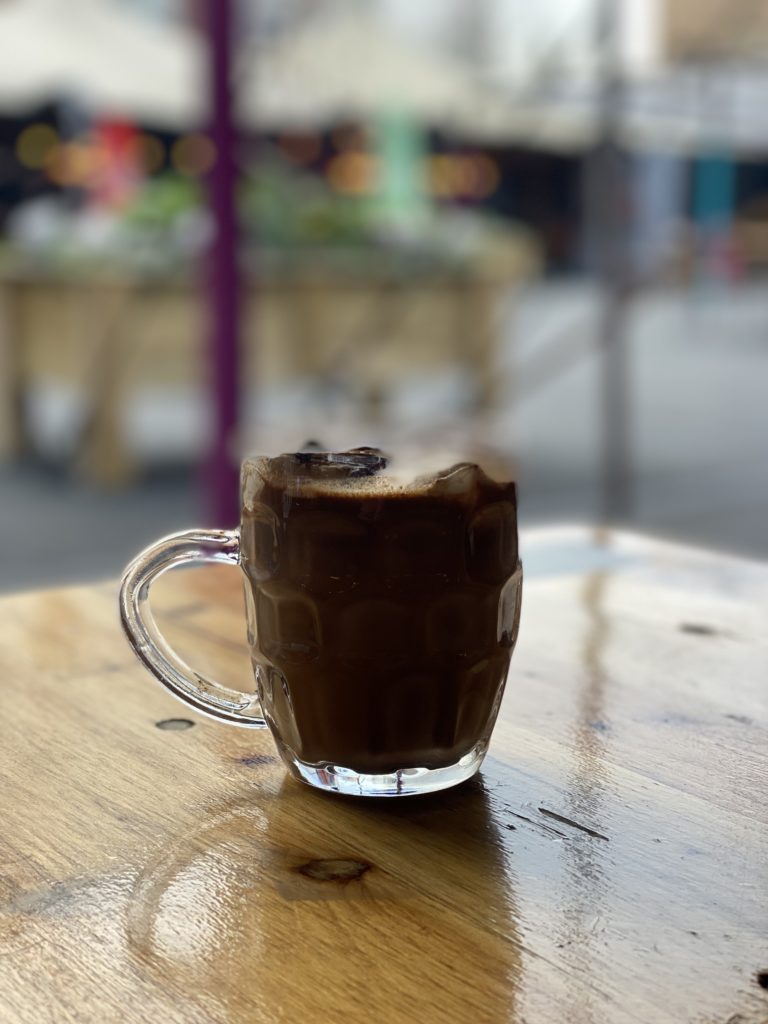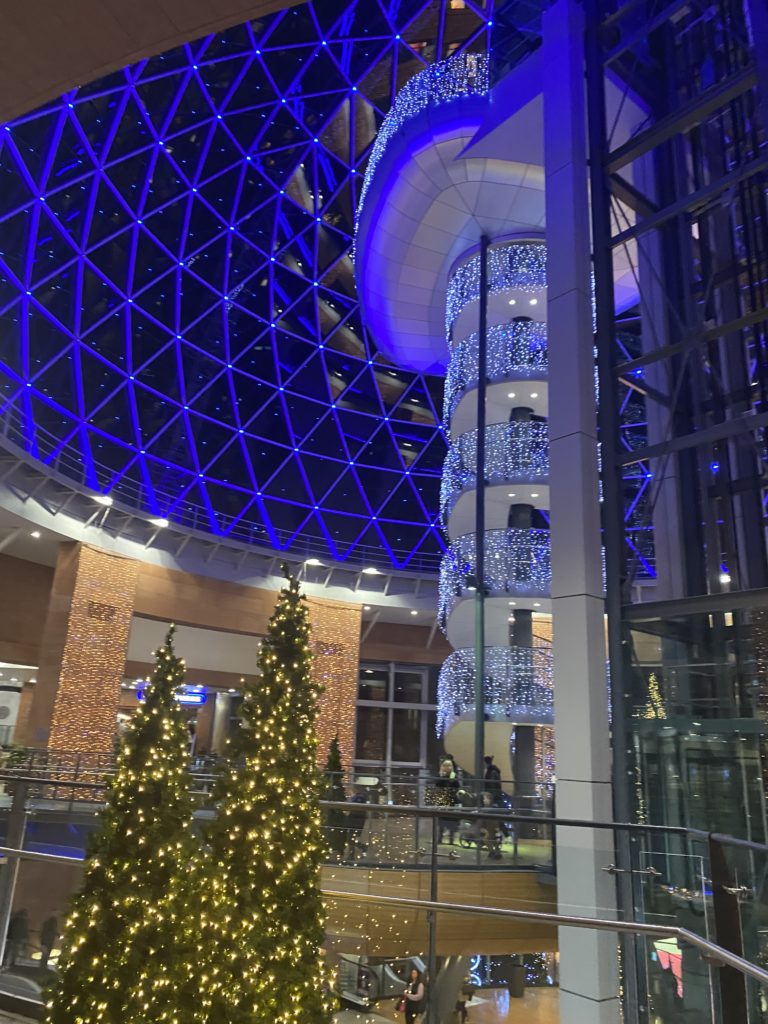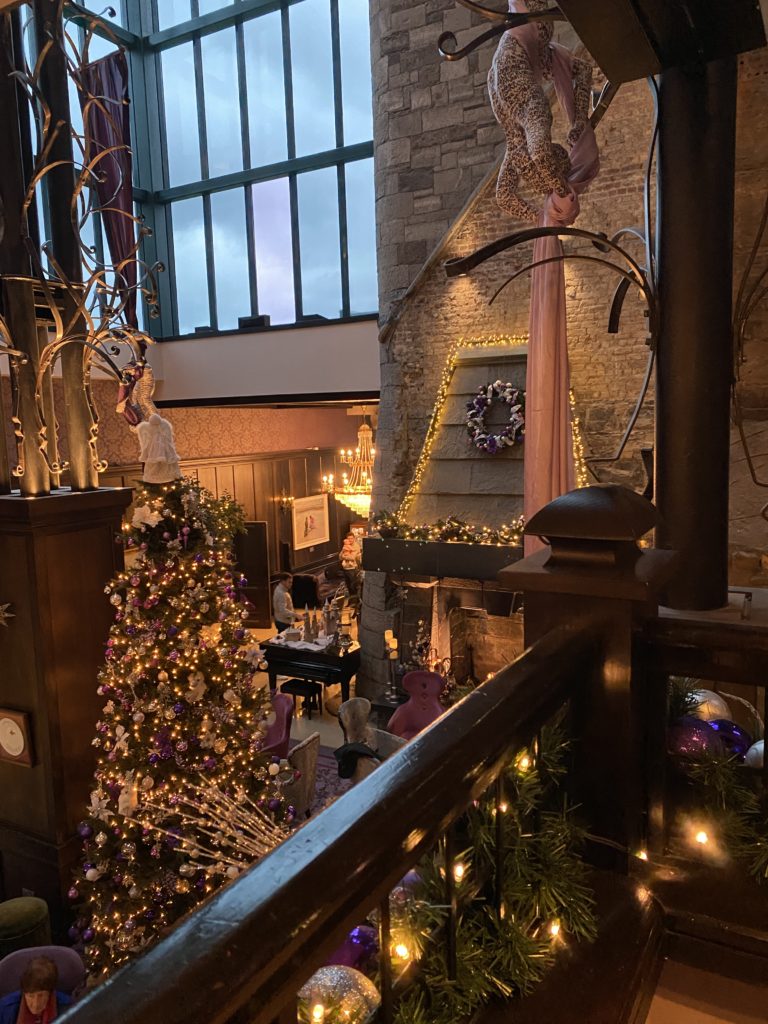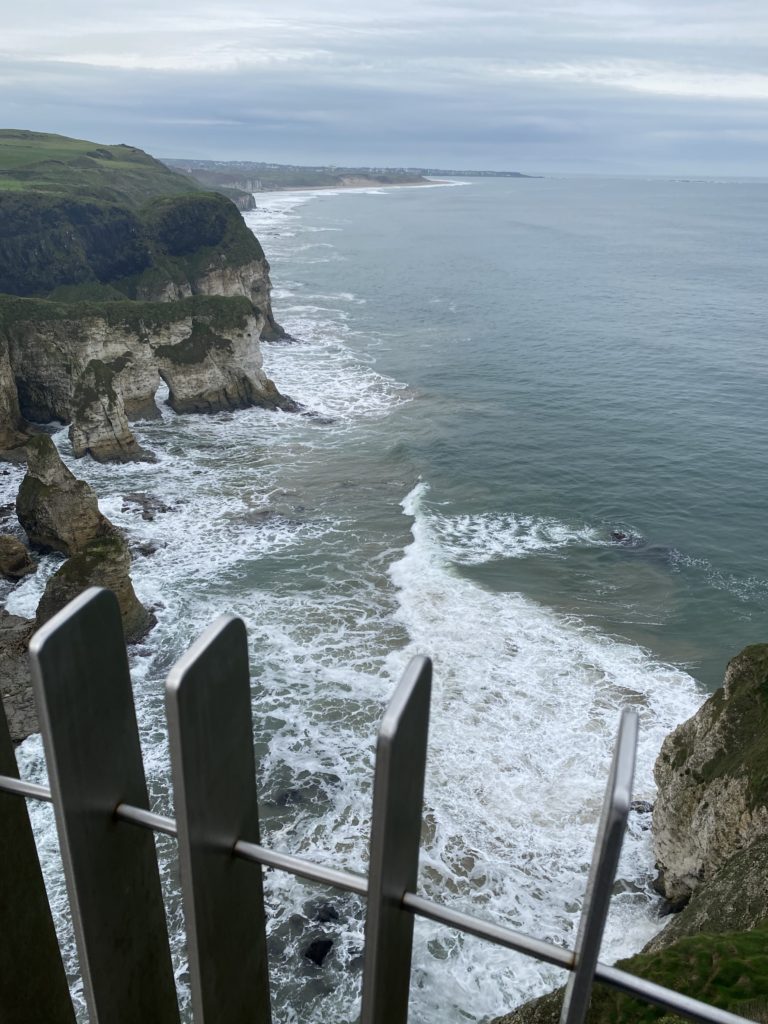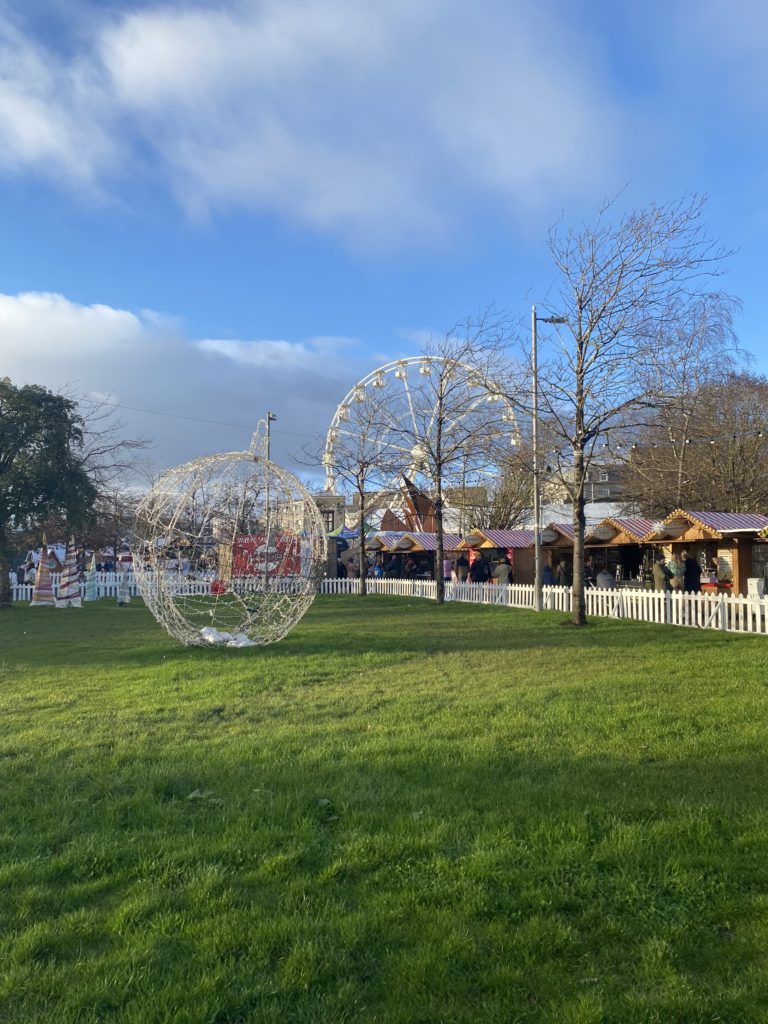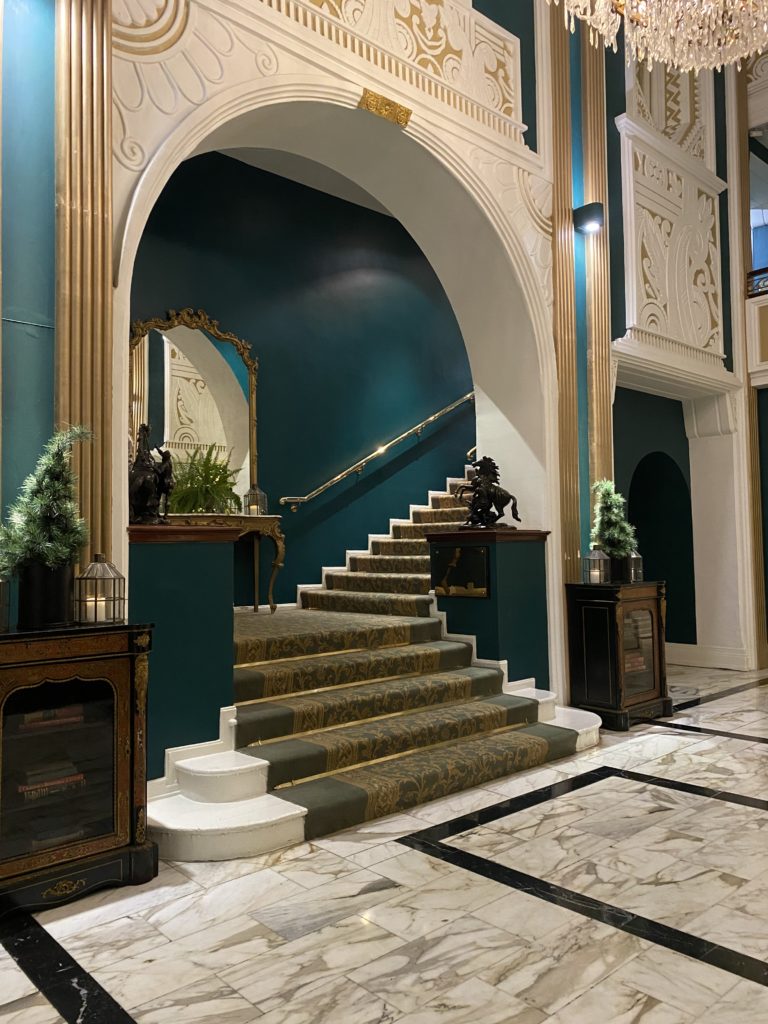Thursday
His threats are getting longer, and more specific. I bold, italicise, proofread the evidence file again, change the font from Arial to Helvetica. Legibility, style. I save the piece to my flash drive as a doc and pdf, because I forget which file type the Writing Centre printer prefers. In my stomach is the carsick feeling I only know otherwise from live performances. I close my laptop, put the flash drive in my pocket, take a red pen so I can circle what is necessary once I have the copies.
At the Centre, the printer is plugged in, the outlet switch flipped up, but the grey thunderhead of a machine won’t turn on. At first I was pressing the wrong button, the green one with a tiny house which means Home. The power buttons look different in Ireland. The police don’t carry guns here. The Centre’s four floors are empty, so I can’t ask anyone, and I don’t have time to wait, and I’m sure where I’m going will have a printer.
On the way to the DART, I see a PSA on the side of a pub. It’s a cropped image of a man’s torso, pulling his buttoned shirt open to reveal some device. It’s either against heart disease or for smoke alarms, I’m walking too fast to check. The caption is Don’t Ignore The Signals.
Down the street from Pearse Station, I learn from a poster while waiting for the train, is a Resource Centre, which was a primary school 107 years ago where a few boys scouted for Irish Volunteer strongholds across the city. The school’s roll books called this the Poets’ Rebellion. Someone is playing a melody I recognize but can’t name on the public piano.
I get a window seat facing forwards so I don’t get any more nauseous. On the way south, the train strides past private backyards and balconies, their laundry hanging in the misted afternoon. We pass a section of Silicon Docks, where some of the tech companies hold their European headquarters. Before the skyscrapers of one-way glass, the Docklands were factories, shipyards, older churns of labour, more immediate exploitation. Before that, a marsh outside a mediaeval city. Where the gallows were, where they burned witches.
At Lansdowne, a yellow PSA from the Irish Heart Foundation says it’s only 800 metres to the American Embassy, and encourages me to walk to reduce stress. In the next 800 metres, I pass a junction box decorated in green which promises that Fibre Broadband is Now Here In Your Community. The box has the winning piece from a children’s art contest, a kid who’s drawn his family in different bubbles labelled Ireland and Rest Of The World, connected by their devices. A new luxury complex offers apartments On View, By Appointment. In the courtyard, four vaguely Grecian plaster statues of women arranged in a rectangle, twisting around with togas and flowers behind a metal fence. The eye-lines of the statues don’t line up. They can’t look at each other.
Inspired by a 5th-century ring fort, the American Embassy is a round, brutal building of concrete and mirrored glass, which also looks like a high school textbook’s illustration of rough endoplasmic reticulum. Yucca trees grow by the main entrance, which are from California, like me. The security checkpoint looks like most security checkpoints. A guard sees me waving on the other side of the bulletproof glass, and motions for me to move closer to the intercom.
“Hello,” I say in the device, as I’ve spoken into devices my entire conscious life. “I’m an American grad student, I’m dealing with a cyberstalker, I don’t think he’s in Ireland but the authorities back home recommended that I file reports locally. I have all the documentation on this flash drive, I wasn’t able to print it before coming here. Is there someone I can talk to?”
While that question buzzes up the chain of command, I turn away from the window towards the three-way intersection. Girls leaving school in groups and uniforms, bare-legged in January. Bird nest scrabbles in sycamore branches. A cyclist’s neon jersey says Be Seen Be Safe. Women push their babies in strollers, tiny faces peeking from layers of knit and puffer tucked against the cold, through the crossroads. I turn back to the window.
The guard lets me into the checkpoint so I can talk to a woman, who can give me her first name but not her last. I explain that a guy I dated my first year of college has been leaving threats across my public social media, calling, texting. She asks what kind of threats. I say rape and murder, without stuttering. She asks if I’ve made a garda report, I say I’ve informed campus security but I knew the Embassy closed at five while the garda was open all night, so I wanted to get here first. She asks for my passport, to make a copy inside the rough-E.R.-shaped building, and asks me to wait while she sees what they can do.
It took me a while to get my passport. Long separated, my parents couldn’t agree what my surname was. My birth certificate is under my father’s surname, but my mother got full custody and tried to get my name changed to hers, to make it easier for us to leave America. My father’s lawyers did not appreciate that, so my surname remained his. It has benefits. From commercials I don’t remember acting in as a kid to my most recent poetry collection, I’ve always been known publicly as [redacted], under my mother’s maiden name. My legal life exists more privately. Miss [redacted] is onstage with good posture, making jokes, trying to win an audience. Miss X is shivering under a hot shower. I got my passport when I was 18, able to fill out the paperwork by myself. In the picture, my hair is combed straight, pushed back from my shiny forehead. I am looking directly into the camera. I am trying not to smile.
The amount of other things I could’ve done today, I say to the guards. I’m fanning my face with the planner where I wrote the email addresses the woman with only a first name told me to write.
It’s stressing you out then, says the guard at the desk.
Yes, I reply. It’s the first day back in lecture after holiday. I’m here for my master’s, I just wish I was at the library.
You’re at Trinity? says the guard by the metal detector. They must be working you hard.
They’re teaching me how to read, I say, it’s a great program.
I don’t usually tell people I’m a writer, because then they stop acting weird around me and I can’t take notes, or they act weird in a different way. When asked, I usually say I’m studying literature.
For literature, continues that guard, they must have you writing so much. I took a business course over Christmas, I had to write six thousand words, it was so hard, like.
He pulls his phone from his uniform pocket. It’s these things, they’re so distracting.
Absolutely, I reply. I turn my internet off when I’m working. It just doesn’t exist.
The Embassy woman returns with my 18-year-old face. Since his finances allow him to travel, and he might have a French passport, they’re gonna try to put a travel check on him so he can’t enter Ireland, but I can’t quote her on that. She says I did the right thing, seeing how he’s sent me weird messages in the seven years since we dated, but they’d never been violent before. It’s probably hot air, but it’s best to get these things down before they escalate. I can’t use the Embassy printer, too much security, so I’ll email the documentation.
On the way back to Lansdowne, a woman runs alone with her pit bull’s leash clipped to her waist. I pass a pretty bed-and-breakfast in Victorian brick called Ariel House. Ariel was the first character I ever played, in a children’s production of The Tempest: a sprite contracted to serve a magician until she’s freed in the finale. I was eight, with a bad stutter. My mom thought Shakespeare would be more fun than voice therapy. As I walk to the train, I am breathing how I’ve been breathing all week, how they taught us, in that little black box theatre that doesn’t exist anymore. Deep belly, in through the nose, out through the mouth. The kind of breath you need to project, to make sure the back row hears every syllable. The breath you need if you want to scream.
While waiting for the DART to Tara, I talk to a woman in a midnight blue puffer because she has a puppy. I miss my dog in the states, I explain to her and the black speckled bulldog named Mario. Mario goes to work with her, he’s very well-behaved. Her mom has his uncle, who’s wild, so she was worried he’d be, but he’s so polite. He’d get along great with my Macaroni, who wags his tail at any stranger until they shift their focus to me. The woman asks how I’m settling in at Trinity, with the literature degree. Lovely, just lovely. She doesn’t know any of the Contemporary Irish Women Poets I’m writing my thesis on, not even Eavan Boland, who was on the leaving certifications for a few years, I think. She lists who was on her cert, twenty years ago.
All the men, I say.All the men, she says.



